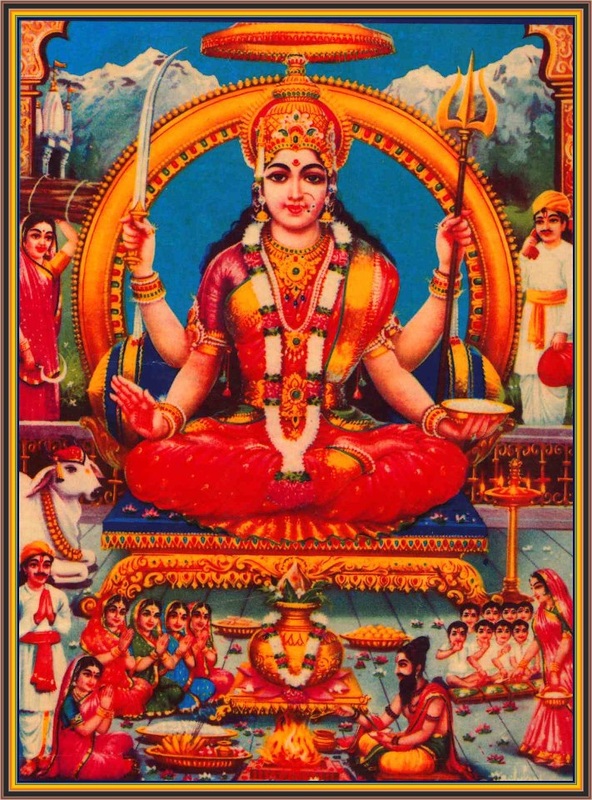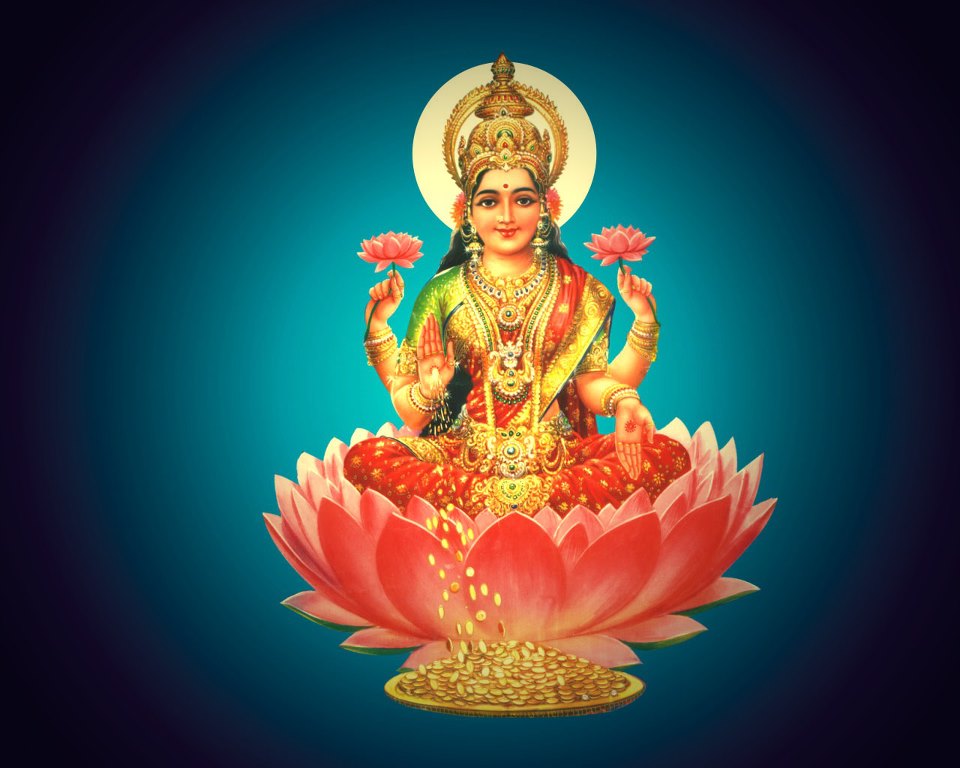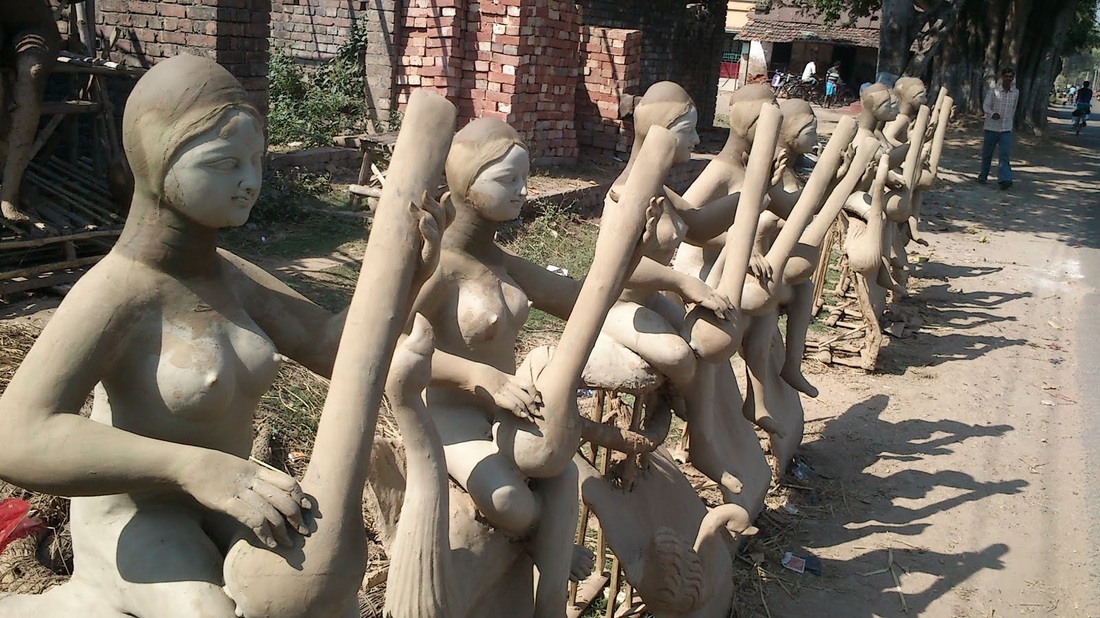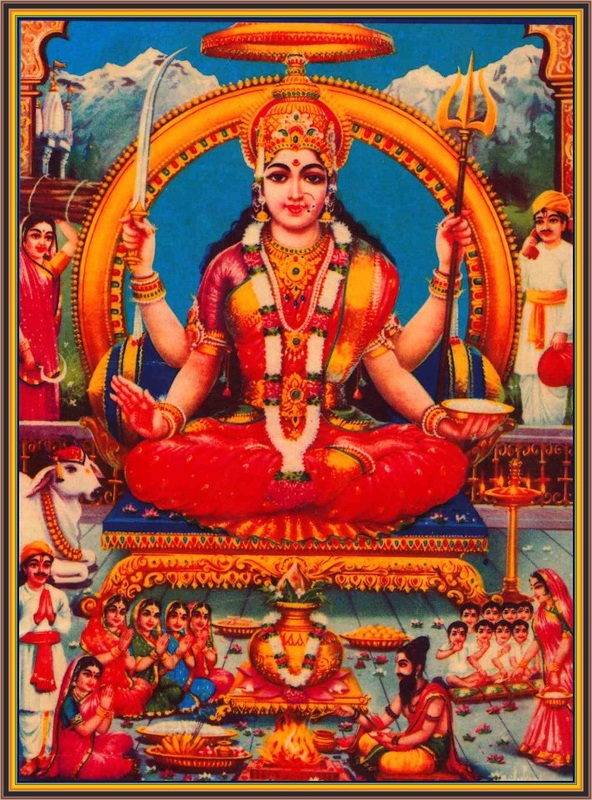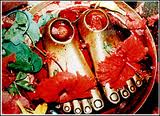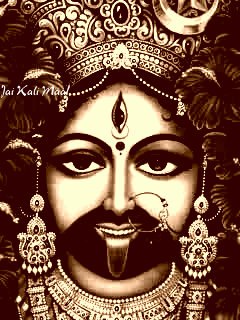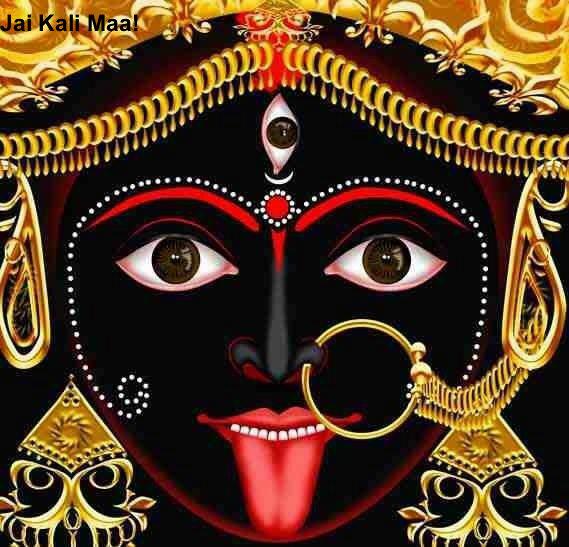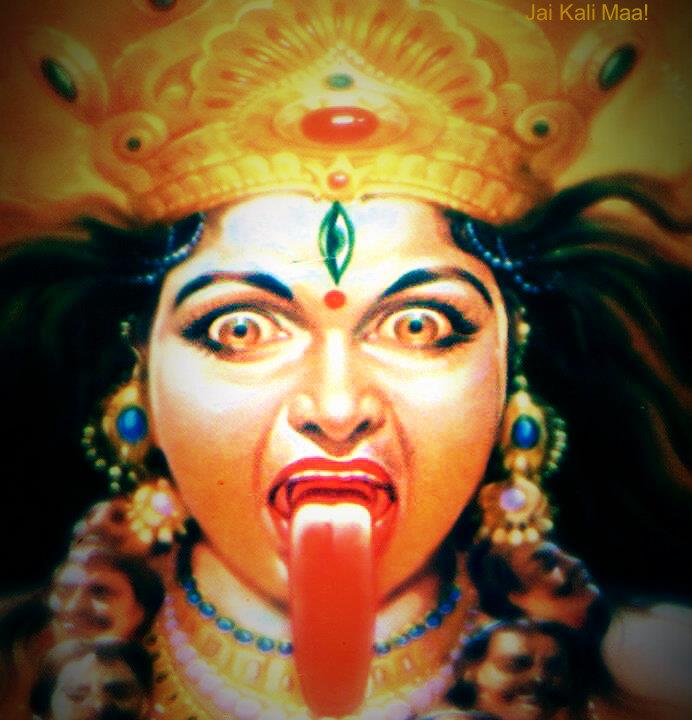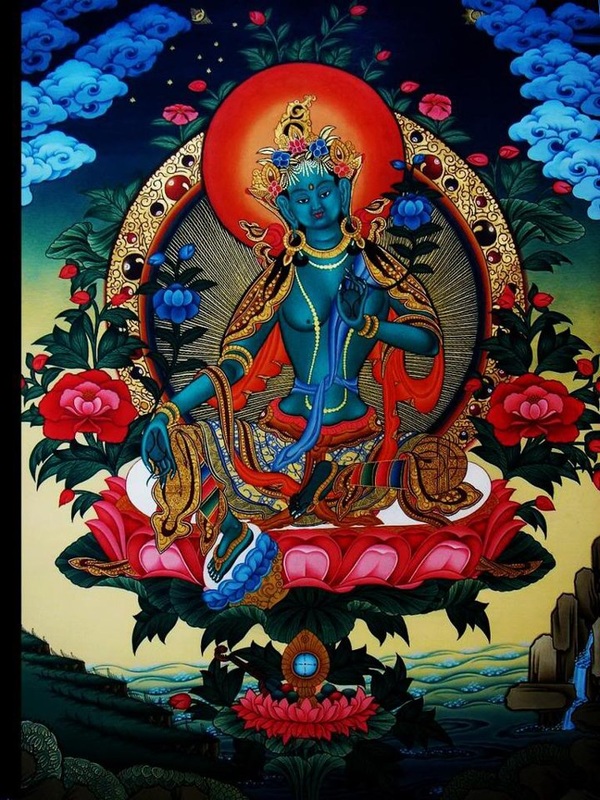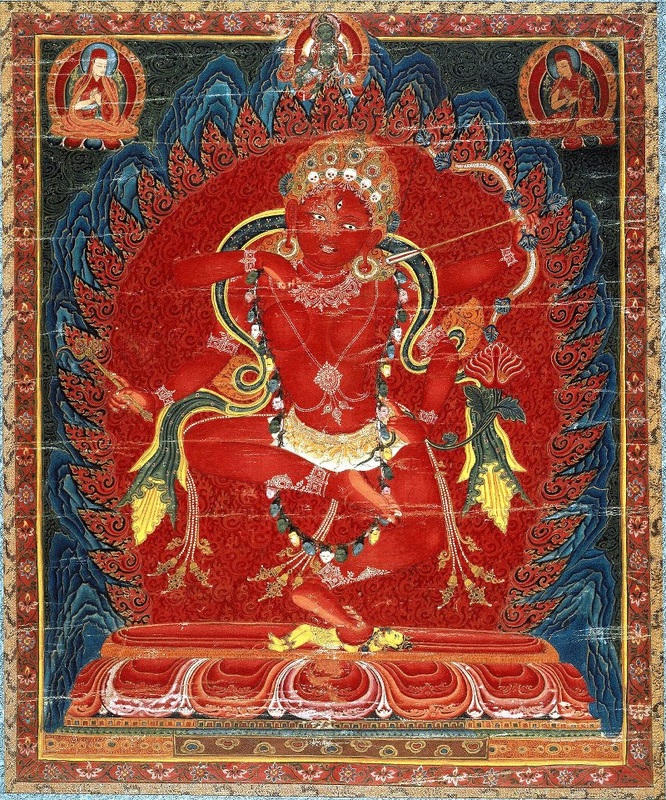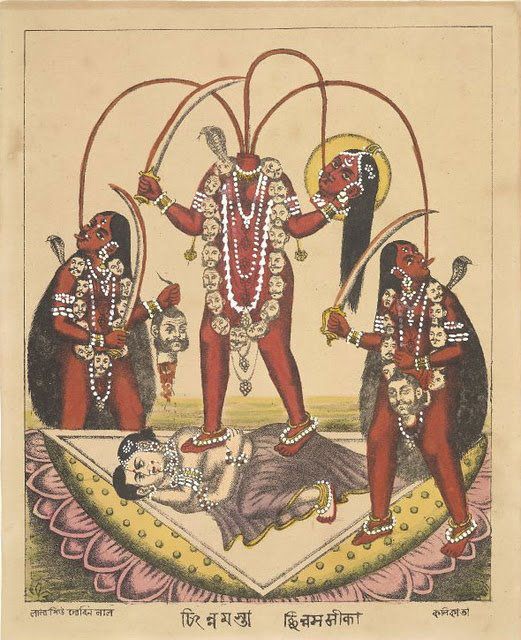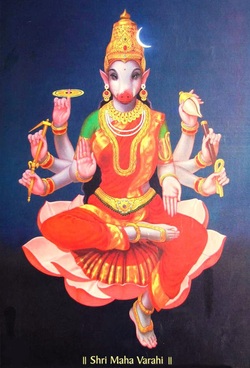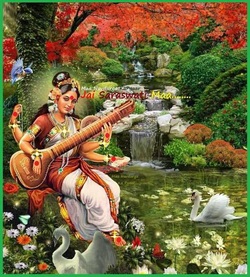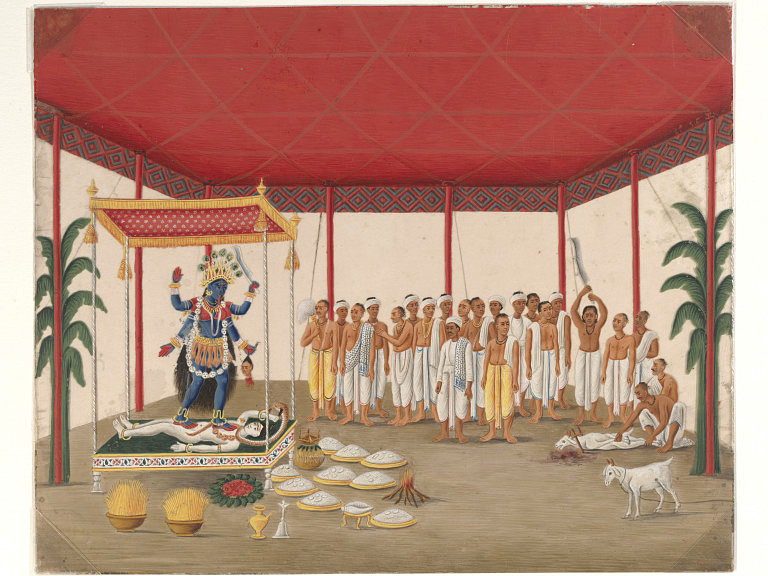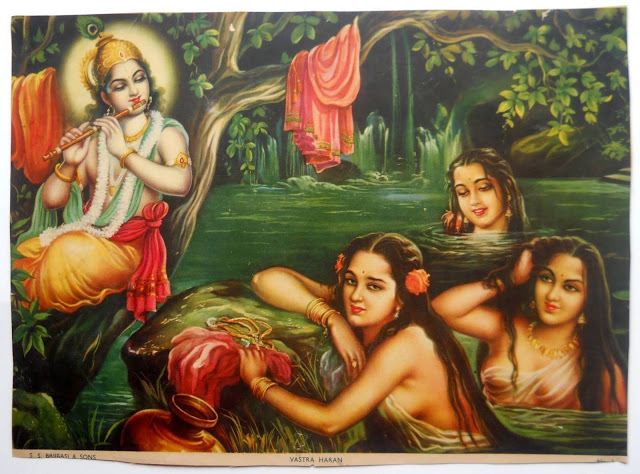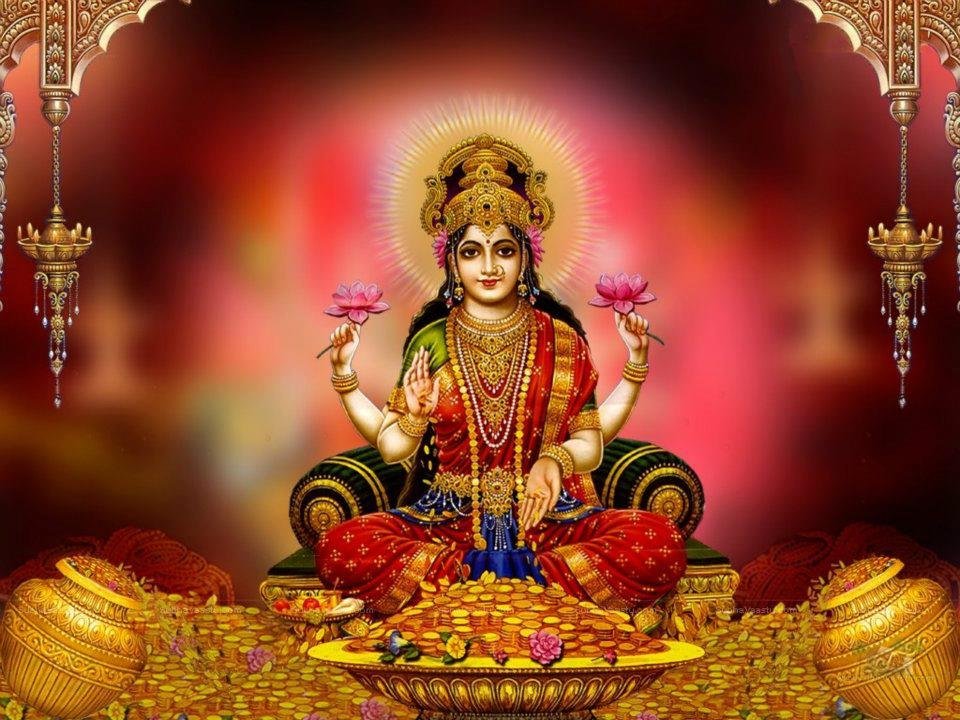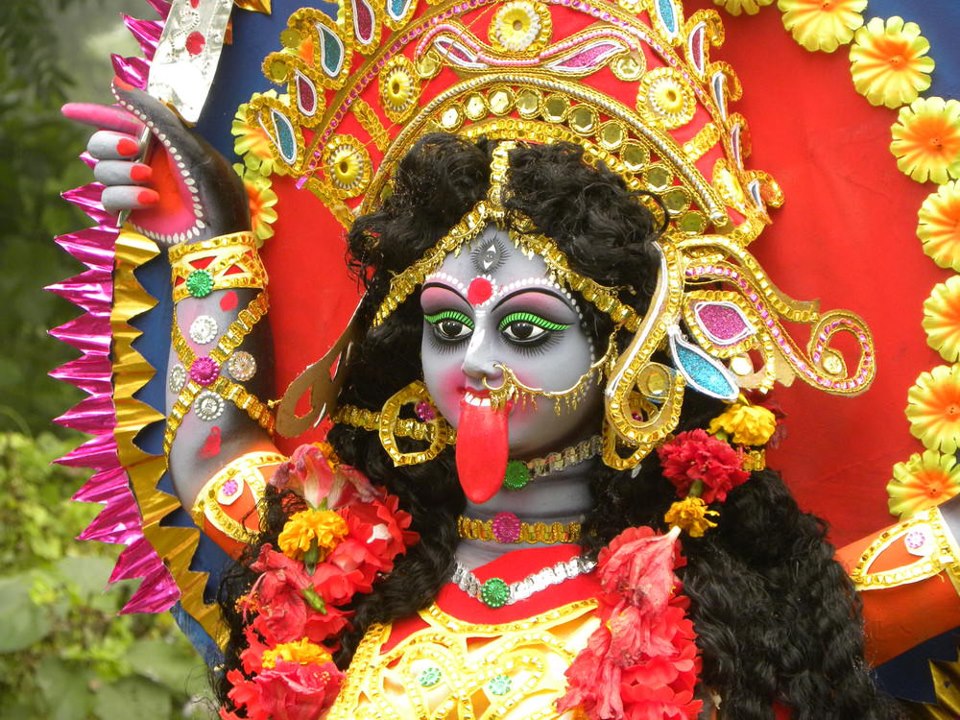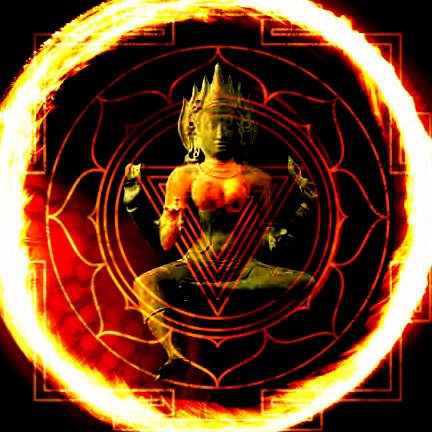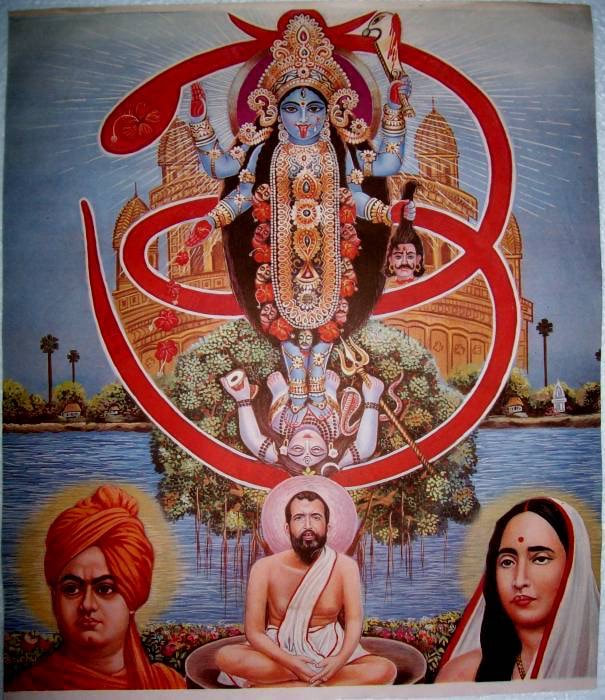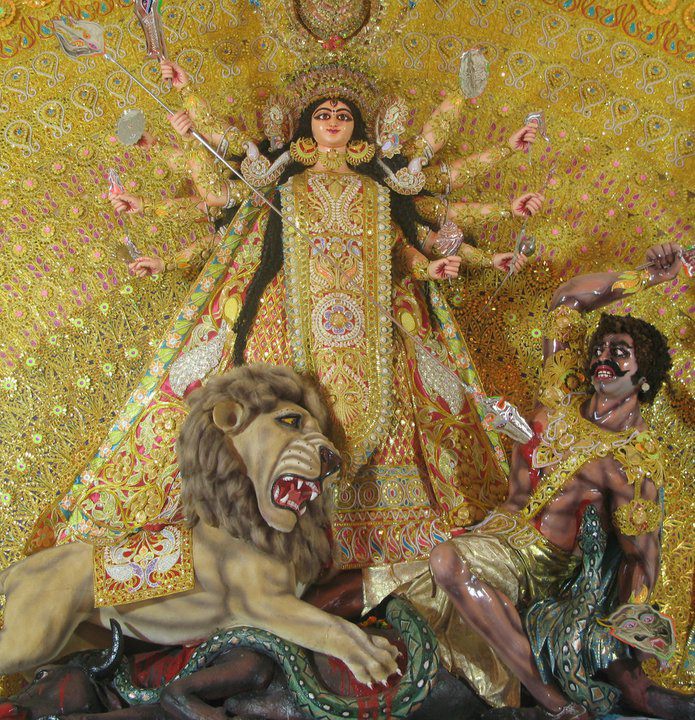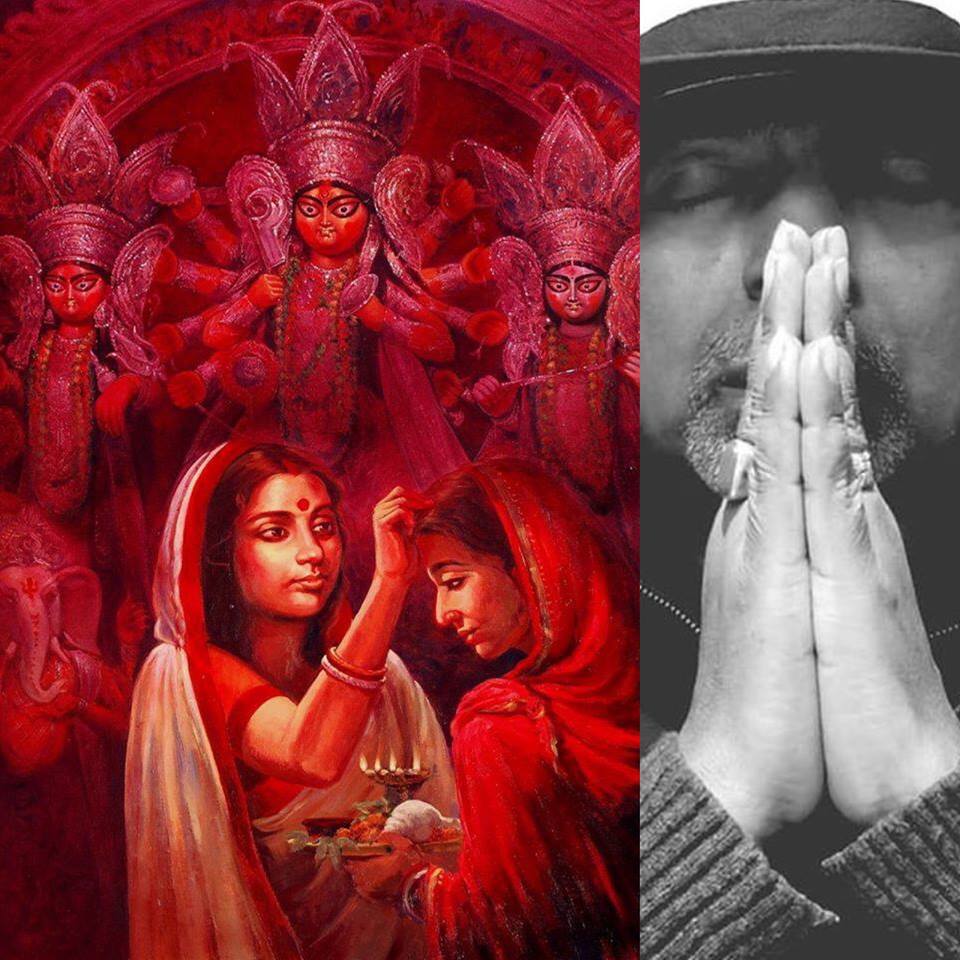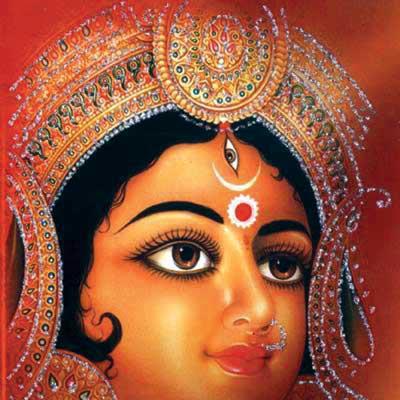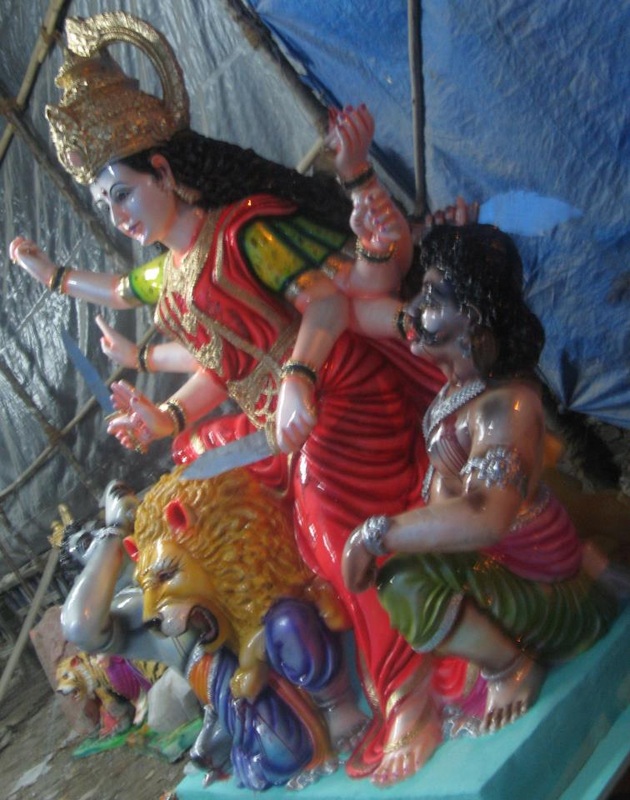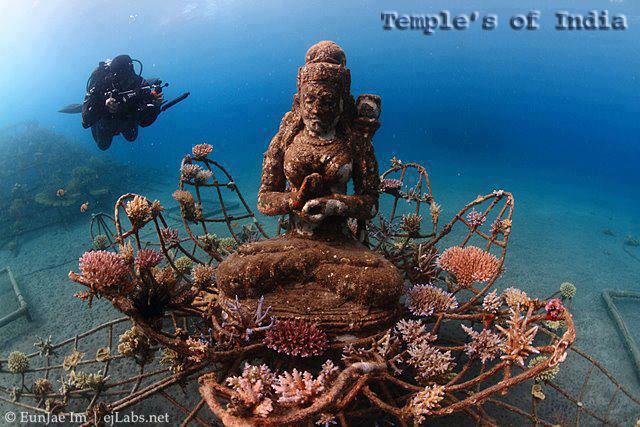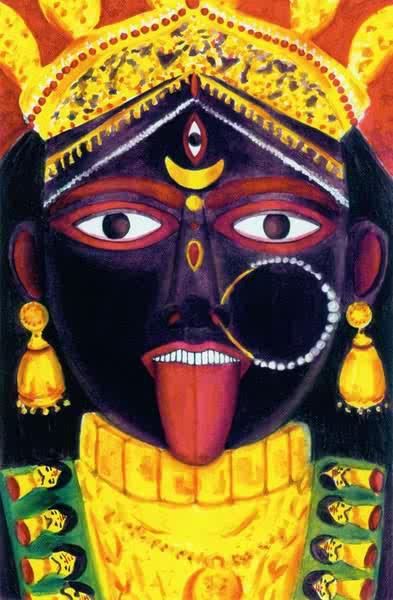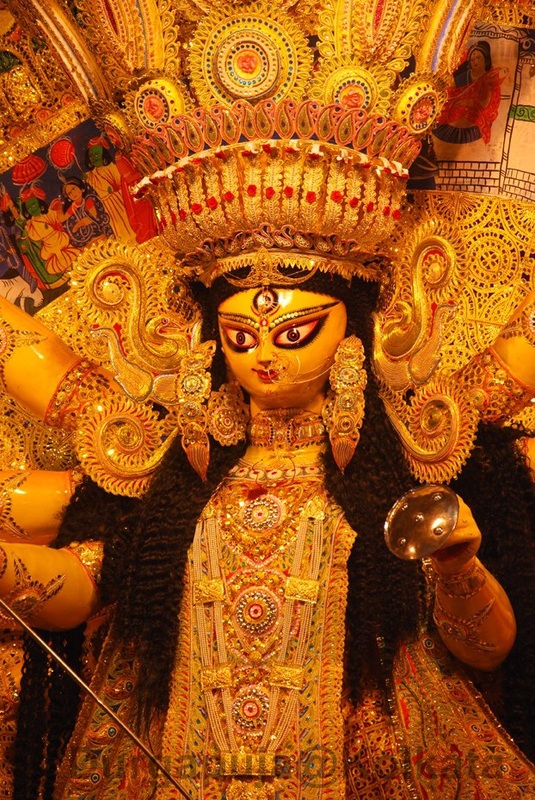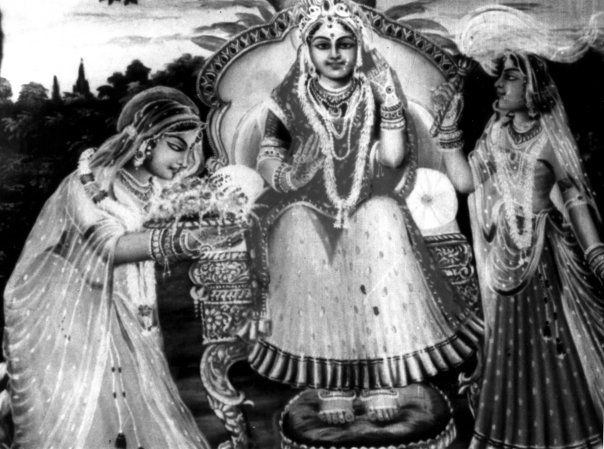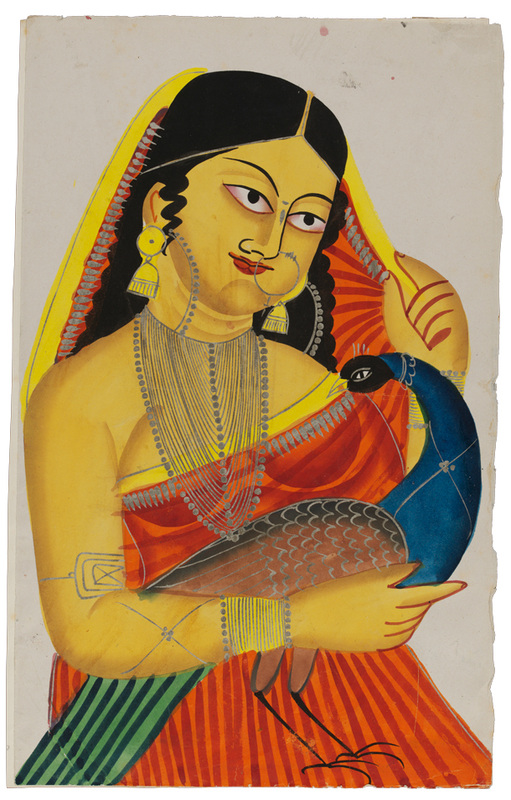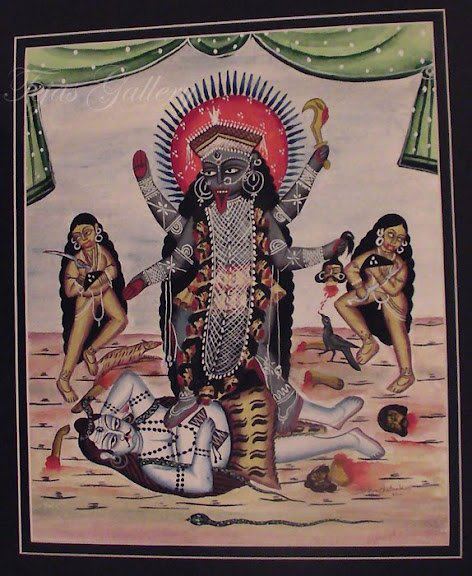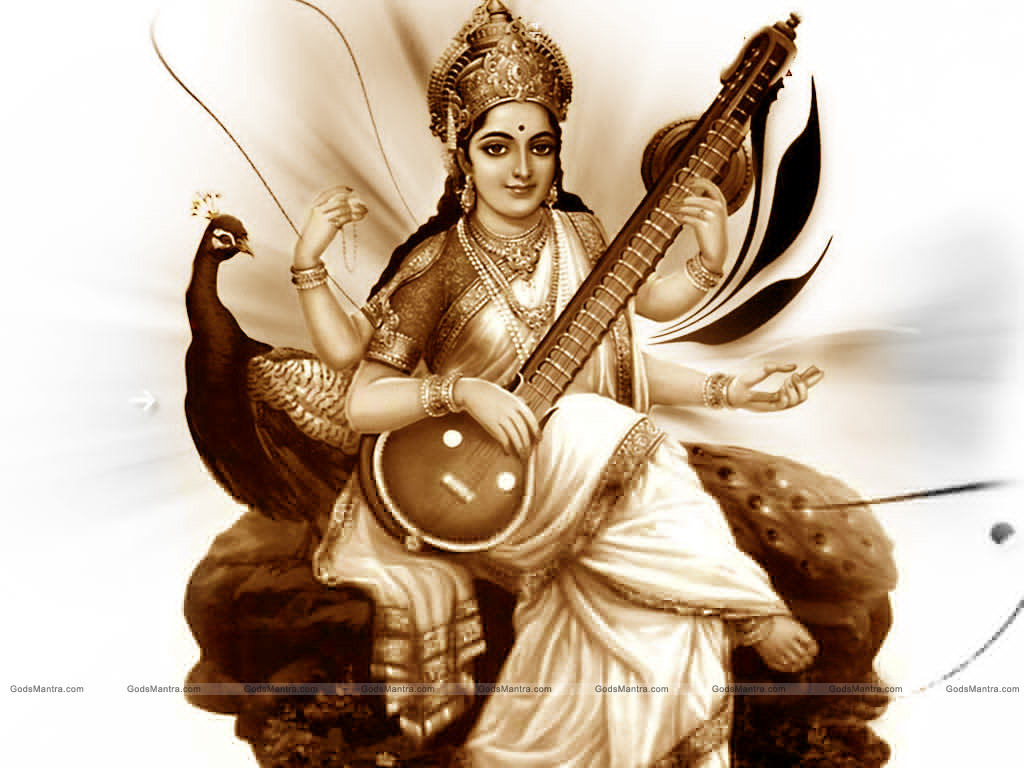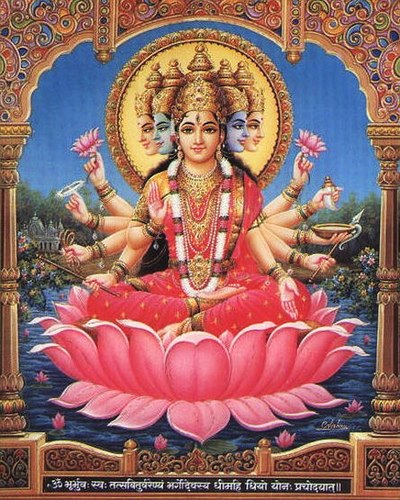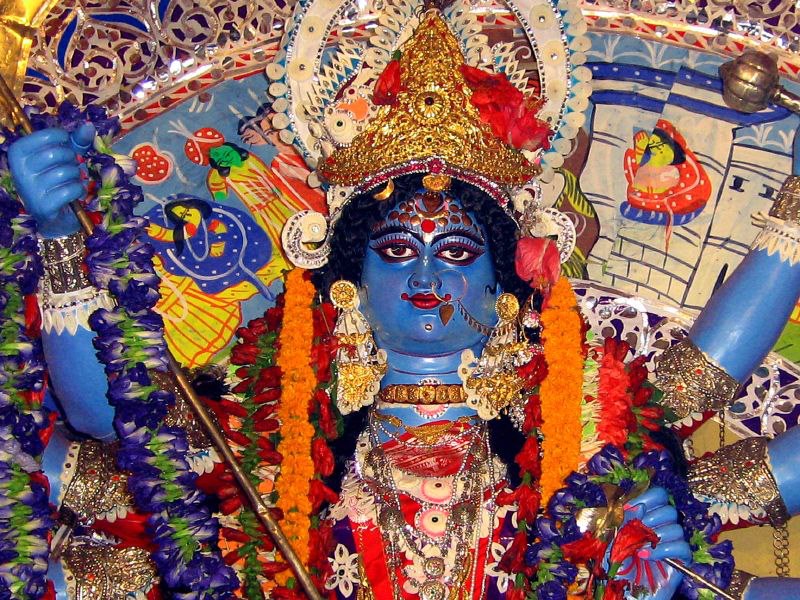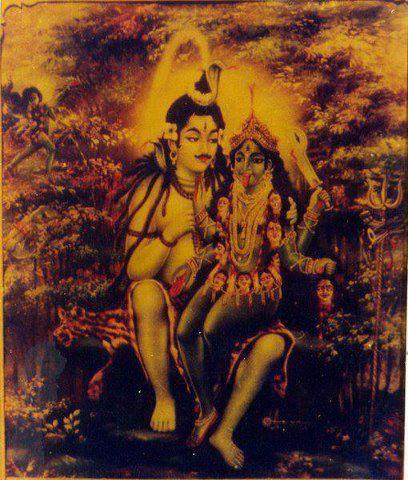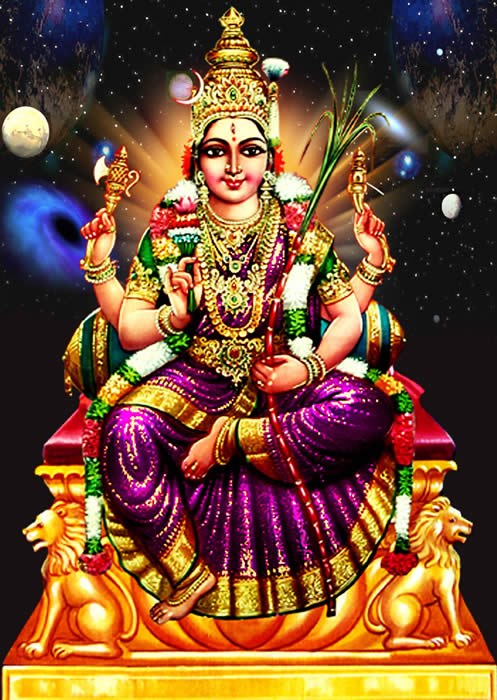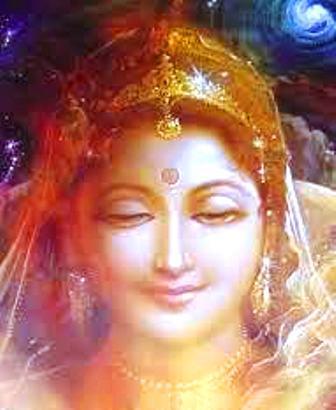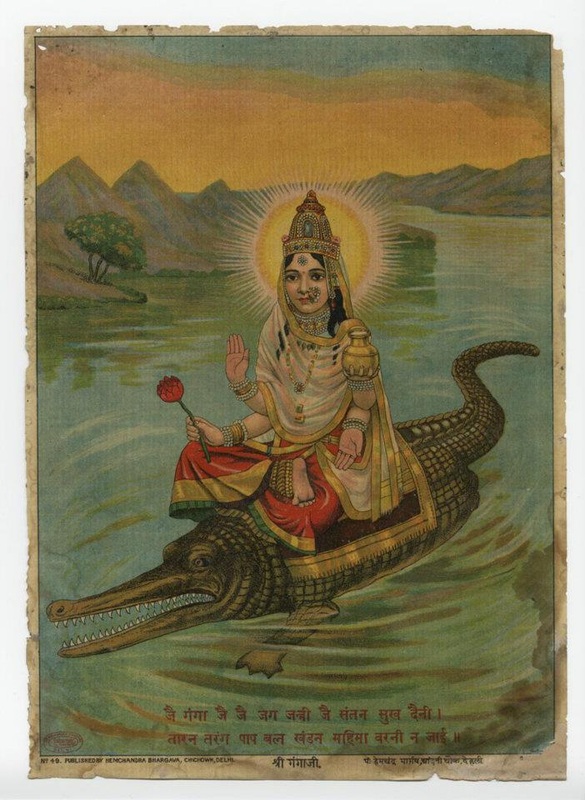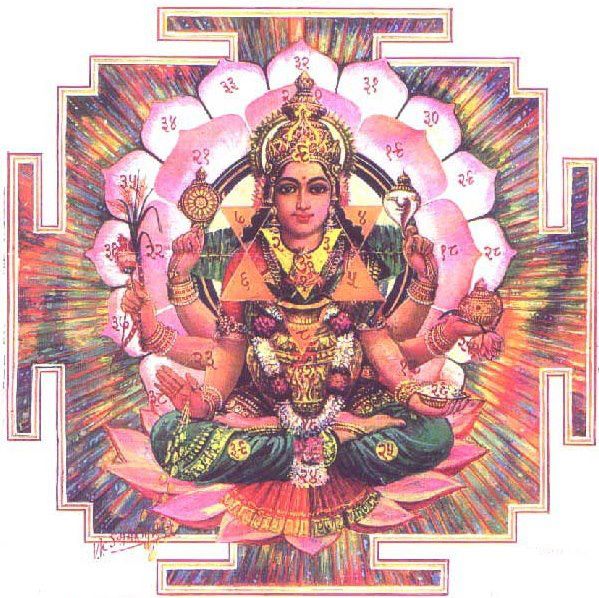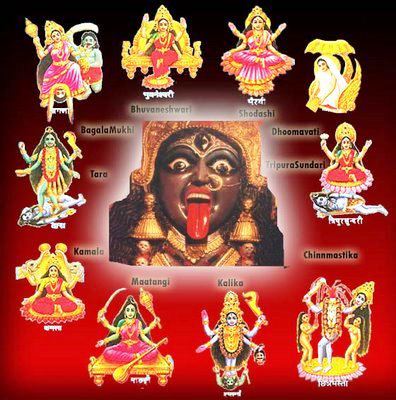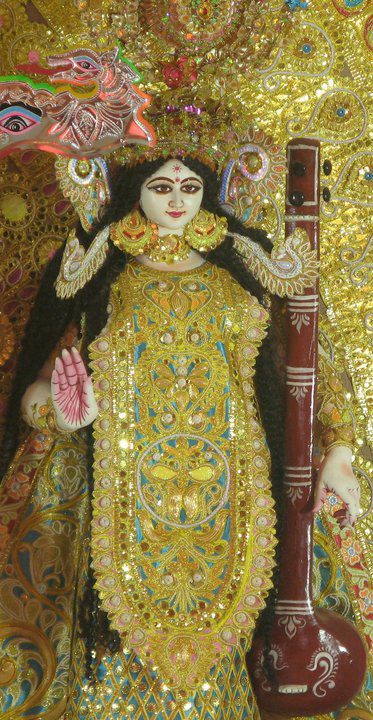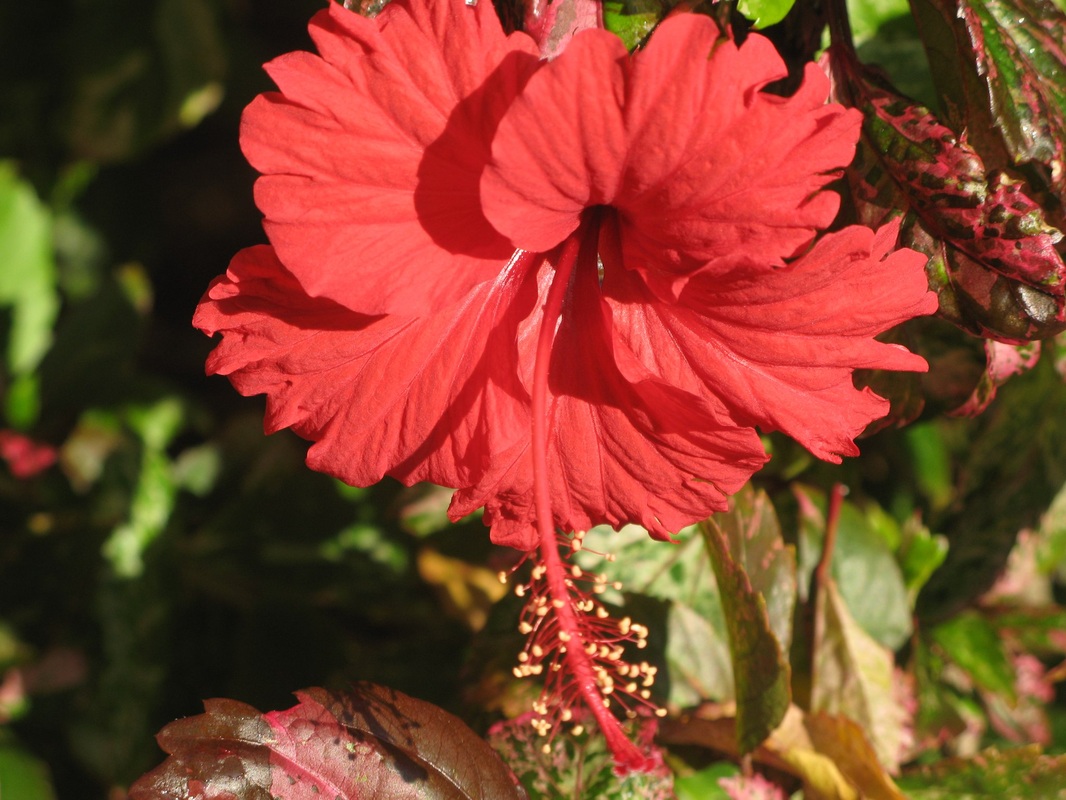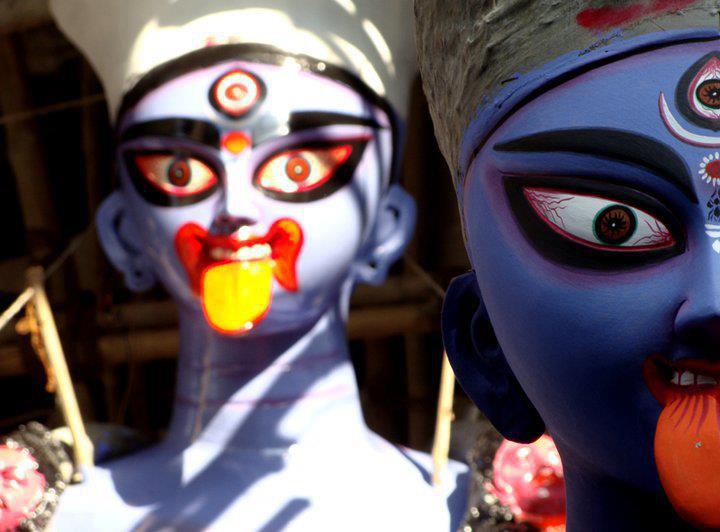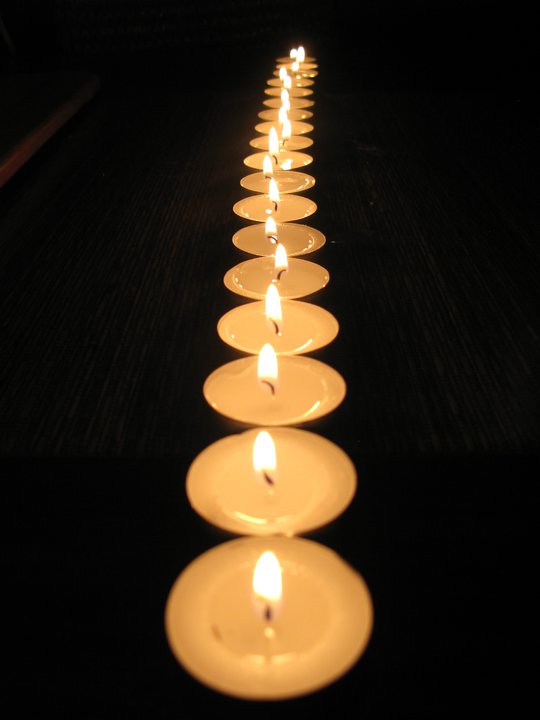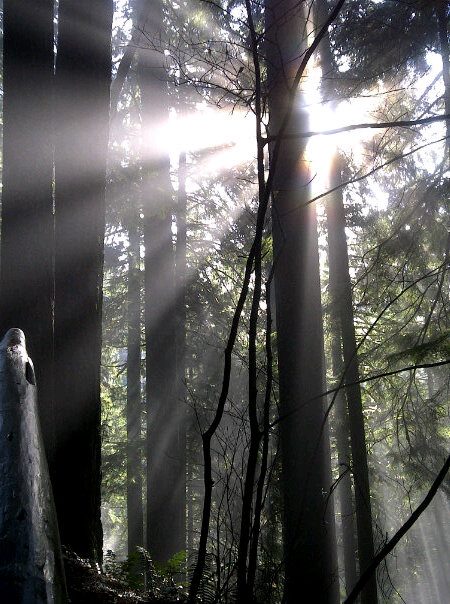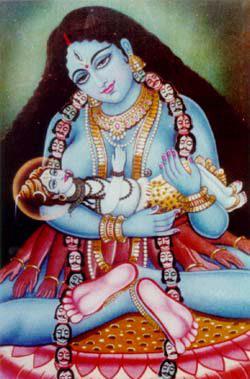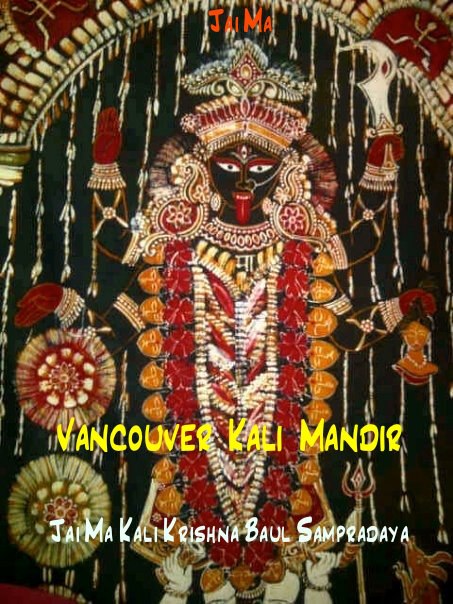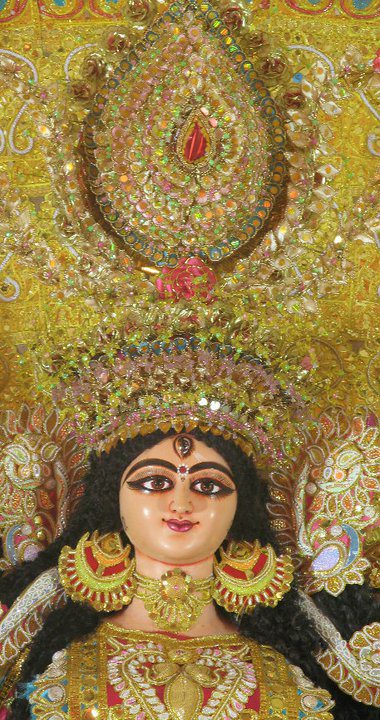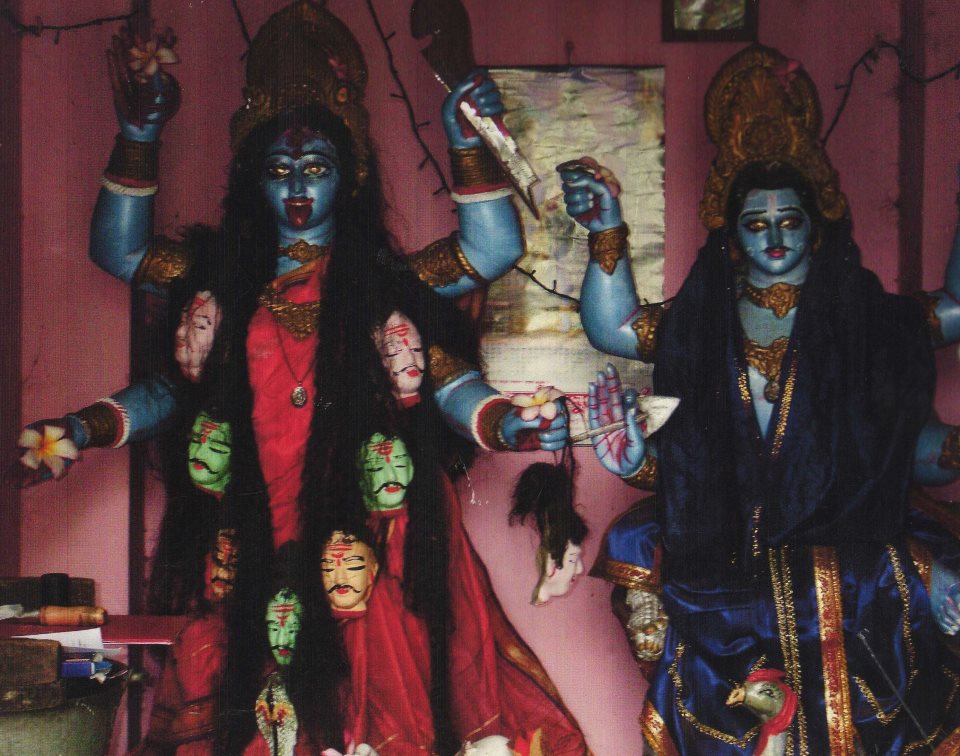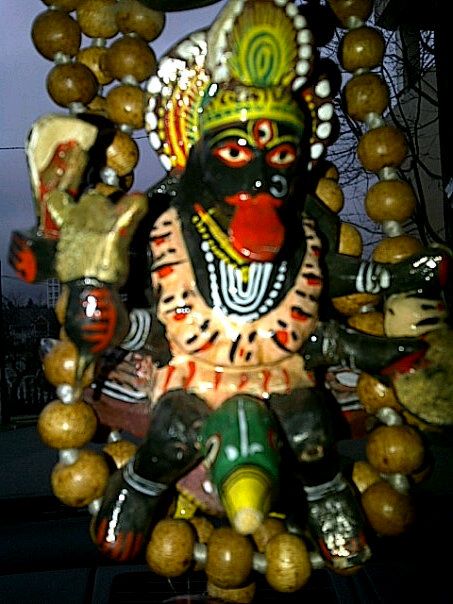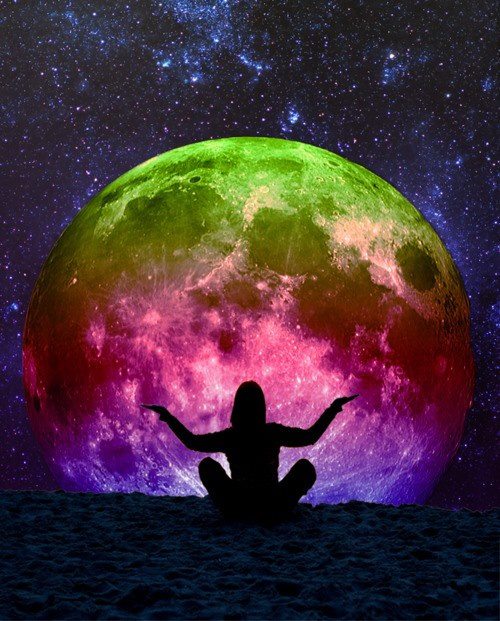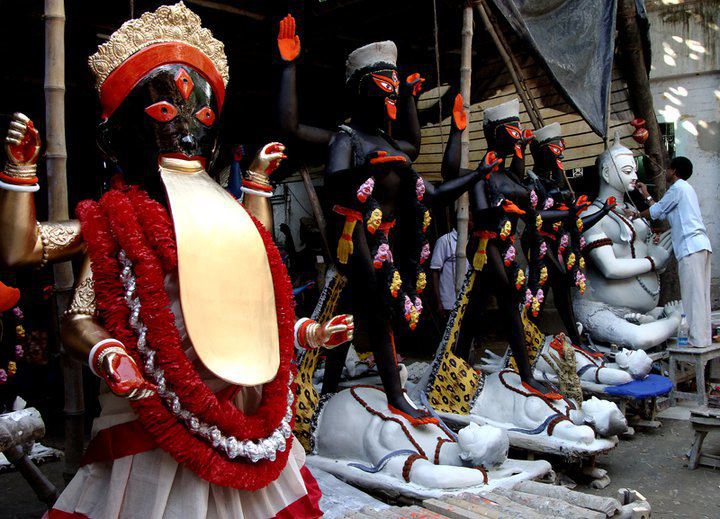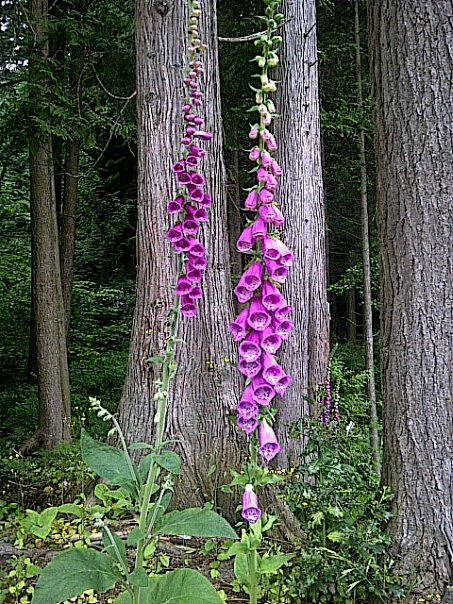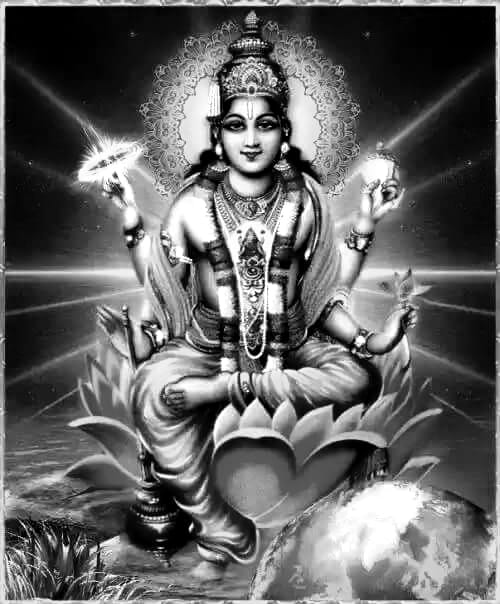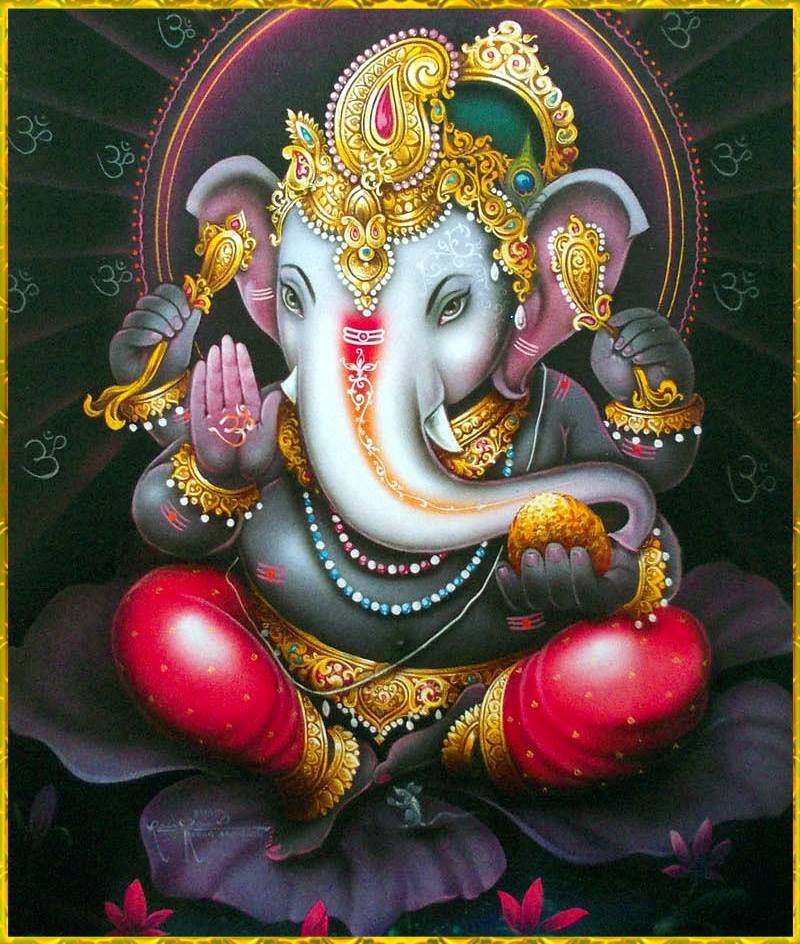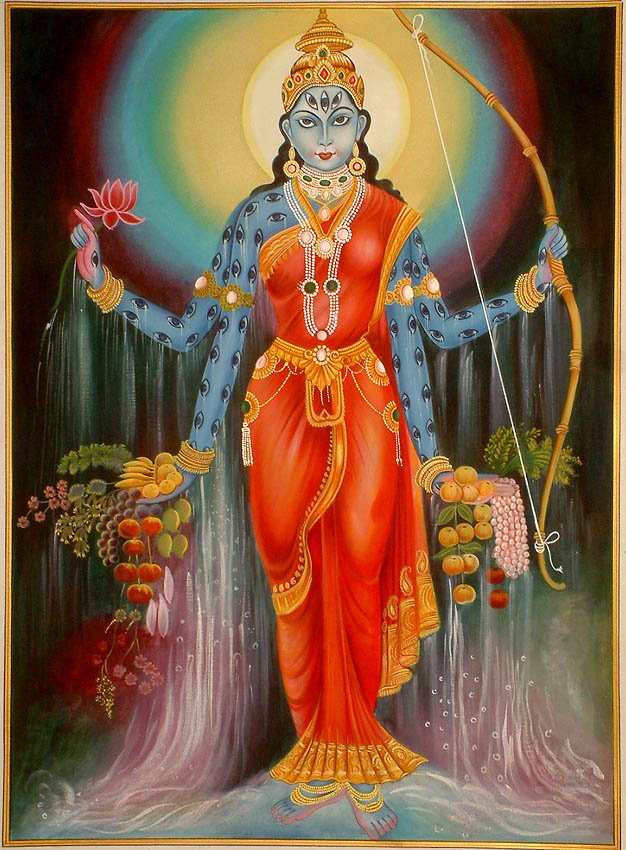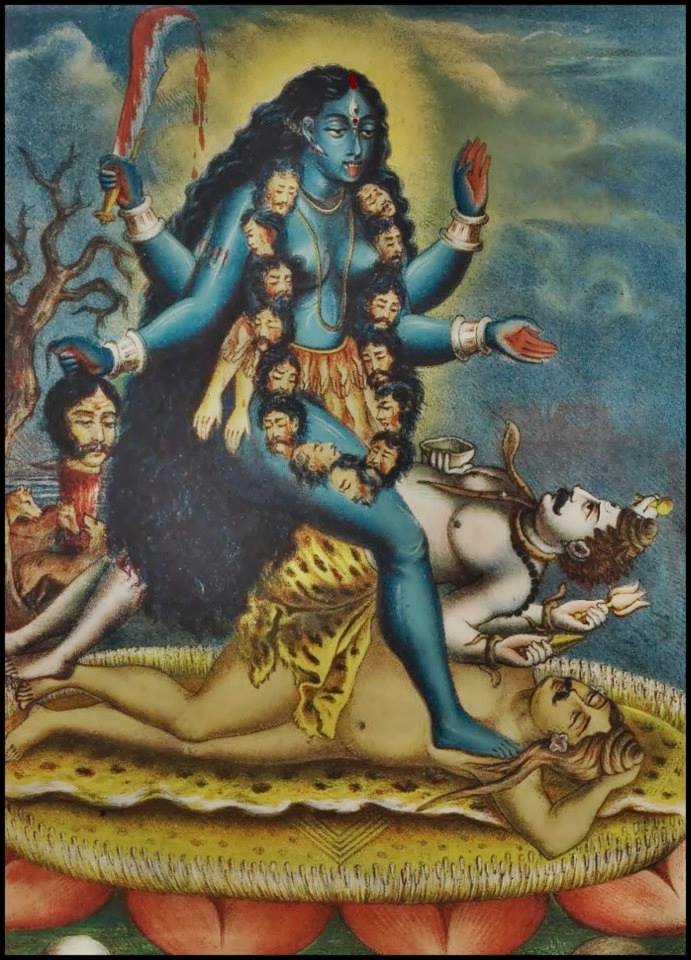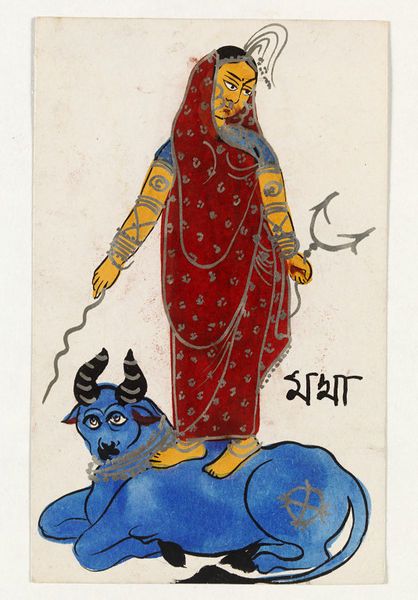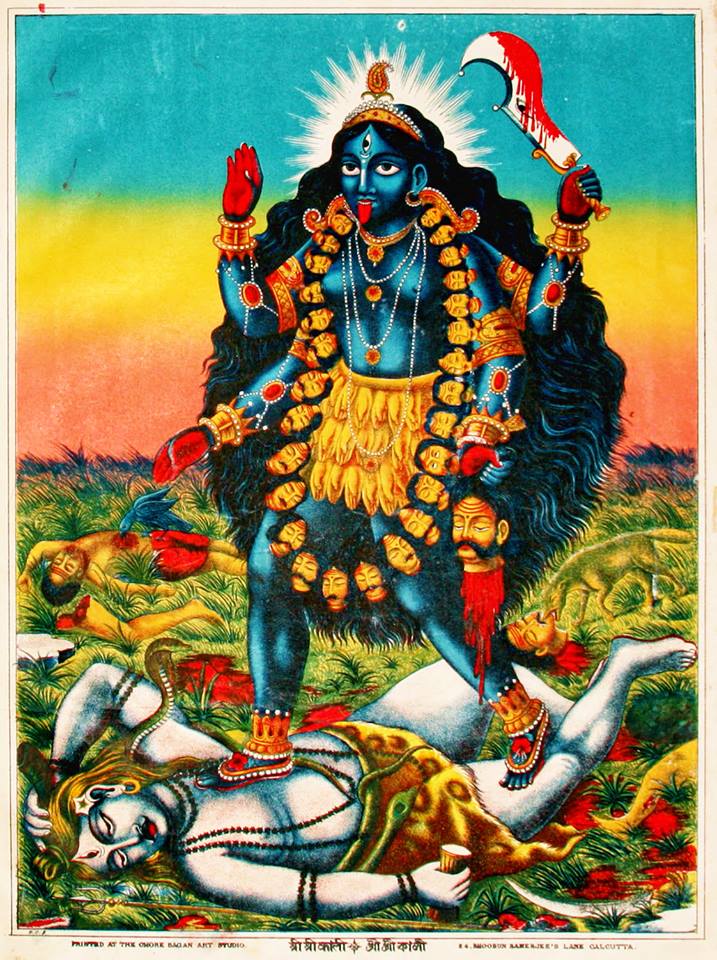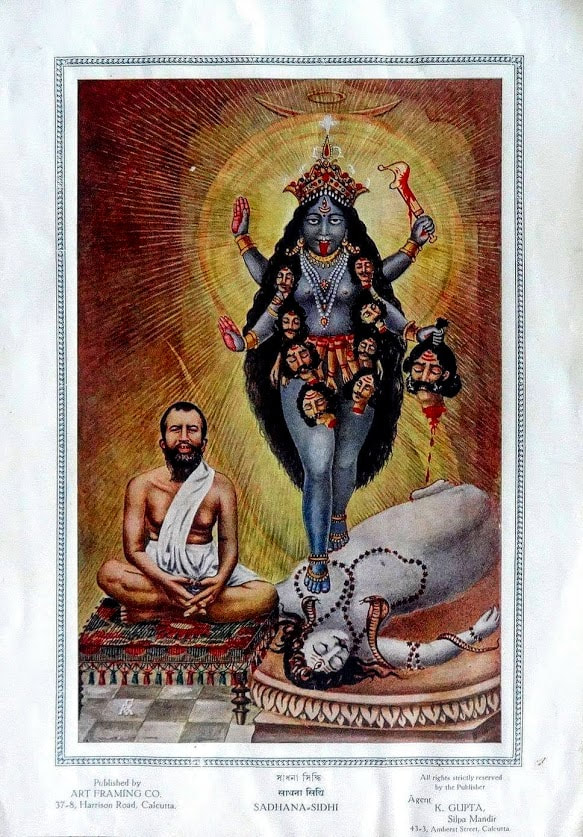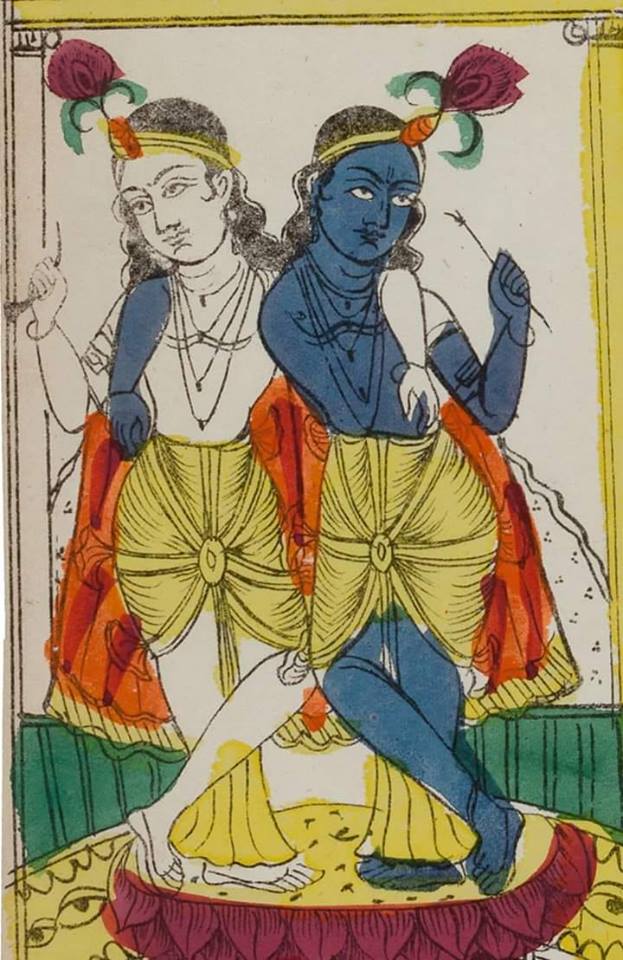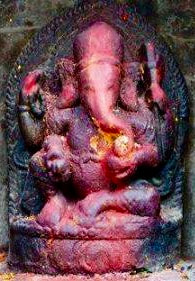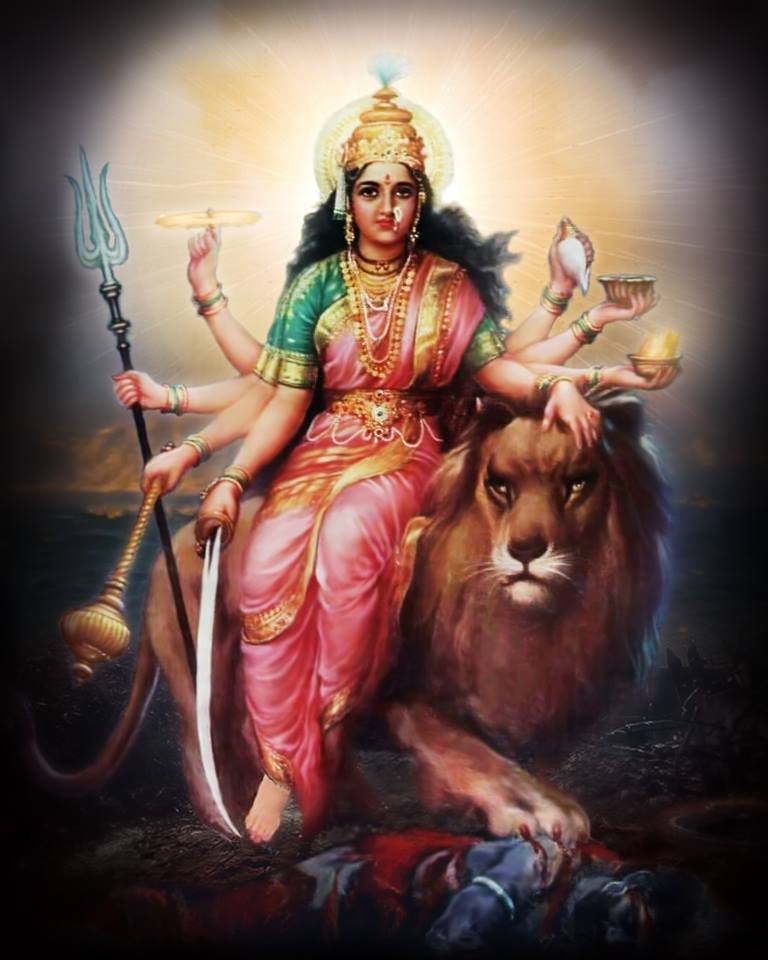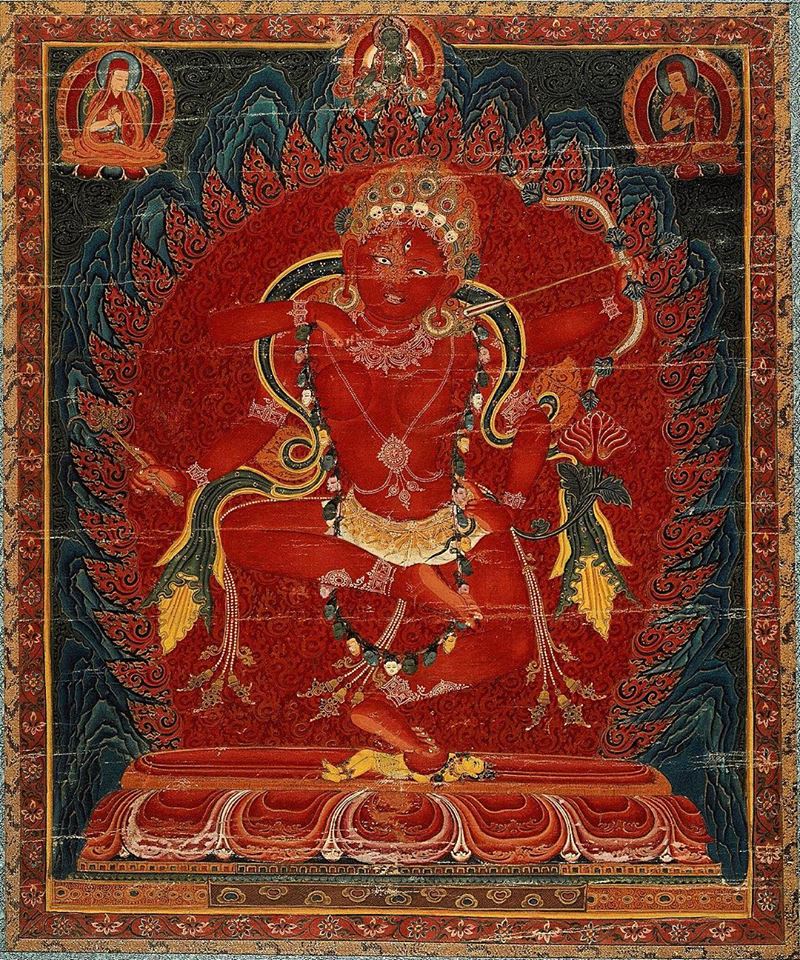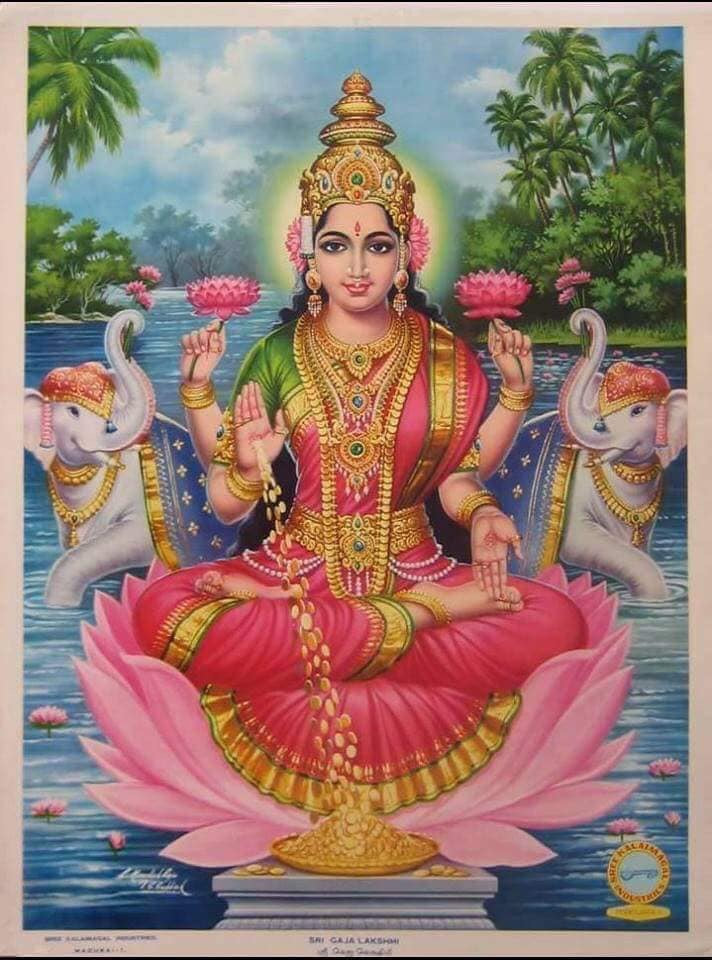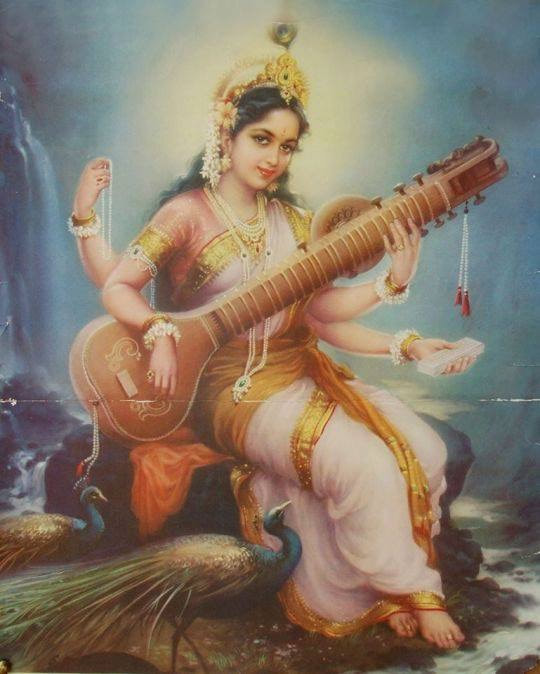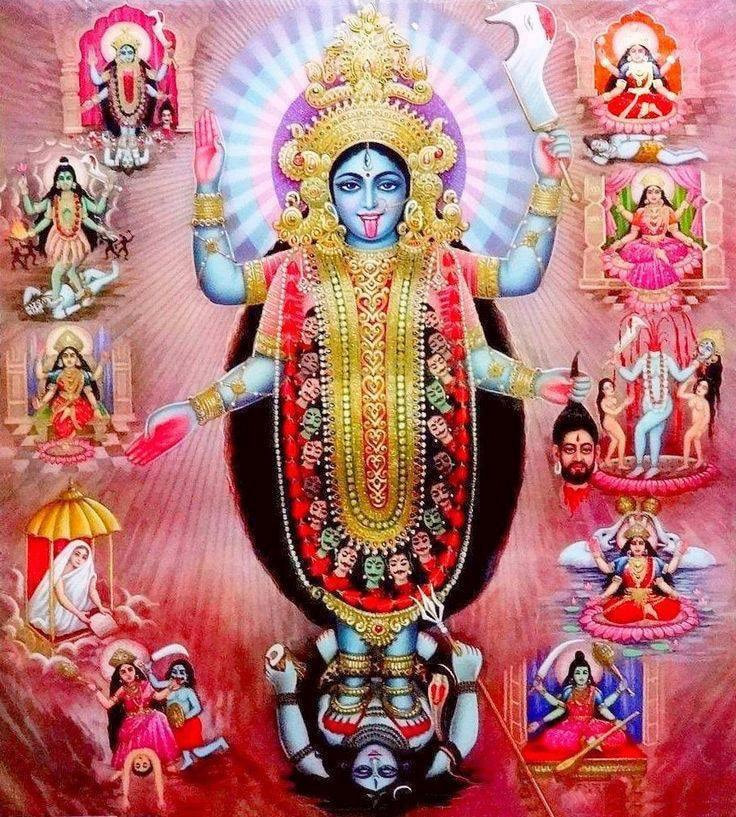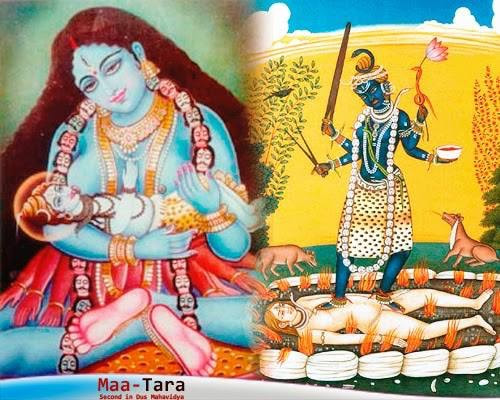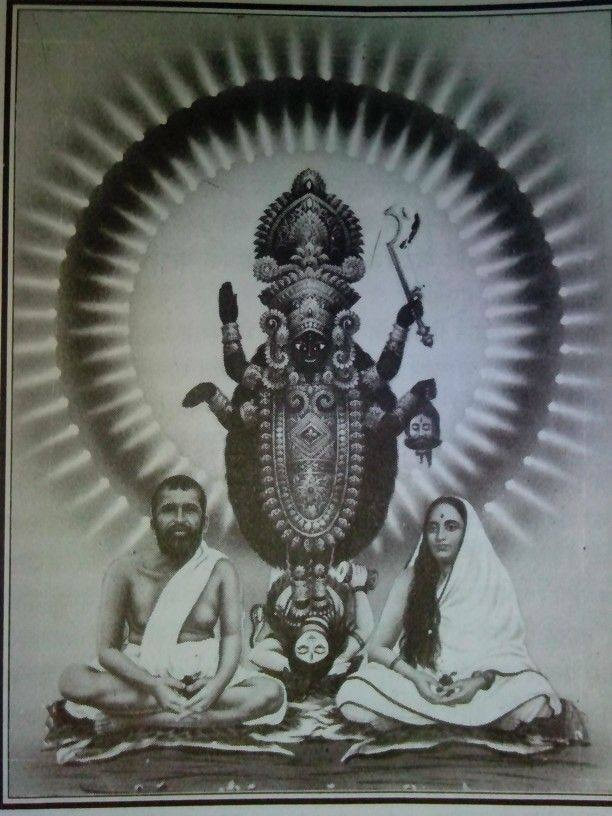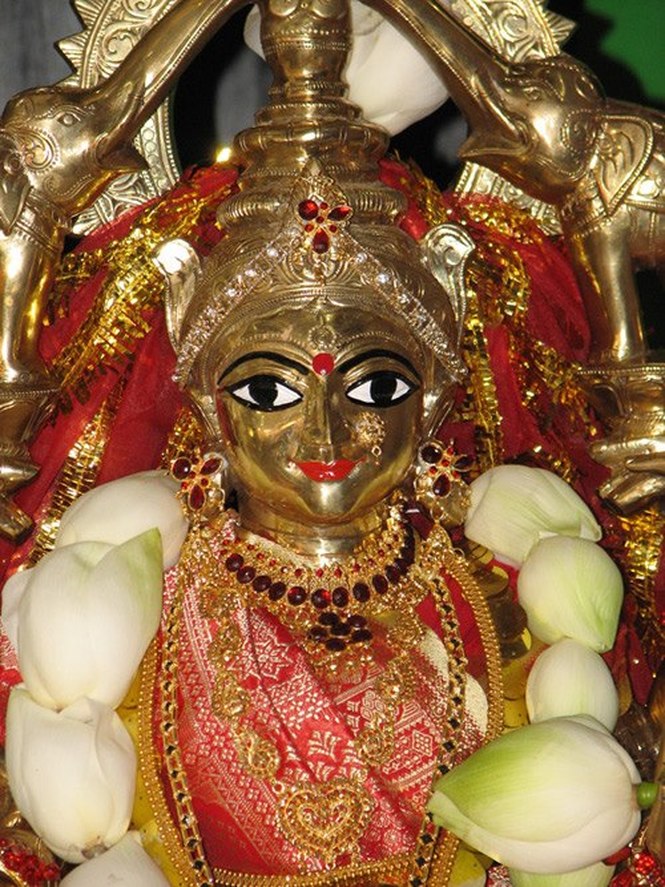
So long as man stayed closed to Nature, he comprehended and felt the interplay of creative and destructive forces. He accepted his world with its dynamism and diversity as the essence of a Mother Goddess. Shakti is the same everywhere as the life-bestower, nourisher, lover, comforter, and finally destroyer. She resided in forest greens surrounded by birds and animals, dark caves and golden beaches, on pink lotuses and above all in all hearts. The web of life is Her spinning lila performed as Shakti’s manifestations.
Mother Vimala is an incarnation of Mother Goddess Shakti. Daksha’s yagna and subsequent immolation by Sati or the episode of Shiva carrying his dead wife until Mahavishnu cut it with His Sudarshana Chakra to avoid total destruction of the Universe are too well known to be repeated. Mother Vimala made Her advent from a part of Sati that graced the earth.
SHAKTI PEETH:
There are disputed claims as to the part from which Mother Vimala emerged. It is said that she appeared where the crown of Goddess Sati fell on earth. Some claim that this is place is located on the banks of Ganga at Batnagar in Bangladesh. This temple is one among the 51 Shaktipeetahs. Others claim it to be in Murshidabad district in West Bengal, India. But the popular notion is that the navel fell in Puri in Orissa, where there is a famous temple dedicated to Goddess Vimala within the perimeters of Jagannath temple.
The Vimala Temple in Puri is considered to be an important Shakti Peeth in Orissa dedicated to Mother Parvati or Durga. It is customary to worship Lord Shiva as Bhairava, the male counterpart or guardian of the presiding goddess of the Shakti Peeth. In Puri, Goddess Vimala is the consort of Purushottama Jagannath, the form of Maha Vishnu or Sri Krishna. This is a departure from the usual Bhairava tradition and Tantric worship of Shiva-Bhairava rather than Vishnu worship. So it is gainsaid that in Puri, the Oneness of the Trinity is expressed through Jagannath. Mother Vimala is also then considered as Goddess Lakshmi, consort of Maha Vishnu.
However, the sanctum has three deities: Jagannath, Balabhadra and Subhadra. In Jagannath tradition, Lakshmi is the orthodox consort of Jagannath. But in Tantra, it is Vimala who is the guardian consort within the temple complex identified with the Goddesses Katyayini, Bhuvaneshvara and Bhairavi. Rituals are attributed to these Shakta goddesses as well as Shiva. The Durga Puja only goes to show Shakti influence. The festival in October is celebrated here for sixteen days culminating with Vijayadasami.
Traditionally Vimala is called Bhairavi with a sthala purana attached to it. Legend has it that Goddess Vimala as Bhairavi was the original occupier of the premises when Jagannath wanted residence. Vimala laid one condition to allow him entry. She said that the bhoga of Jagannath after being offered to him shall be first offered to her before anyone else, and it was on this condition that he was allowed an entry into the temple.
SAPTAMATRIKAS:
Vimala temple enshrines seven Mother Goddesses, the seven Shaktis of Parvati, namely Brahmi, Maheswari, Andri, Kaumari, Vaishnavi, Varahi and Chamunda. Goddess Vimala is the presiding deity of this renowned temple.
SRI VIDYA:
The great acharya, Adi Shankara is said to have established Govardhana Matha in Puri in the 8th century with Goddess Vimala as the presiding goddess. Bhaktas recited hymns from the Devi Mahatmya attributed to sage Markandeya. Debya paradhakshyamapana by Adi Shankara was also recited to pay respects to Goddess Vimala before worshipping Jagannath in the main temple. Then the Jagannatha temple was a Trimurti centre of worship and along with Saraswati, Lakshmi and Parvati. Vimala was a Parvati manifestation.
This practice continued to be Shiva-centric untill the late 17th century when Sri Vidya eroded to give way to Vaishnavism in Puri. While faint remnants of Shaivism and Shaktism remained the place became Vishnu-centric. Tantric Panchamakara which included meat and liquor, even ritual intercourse or tantric sex were all replaced with vegetarian offerings and devadasi symbolic dances. It was during the reign of King Narasimhadeva, ruling between 1623 to 1647 that some of the old traditions were partially revitalized.
It is said that non-vegetarian prasada is offered to Goddess Vimala on certain occasions. During Durga Puja, Mother Vimala assumes a destructive form and non-vegetarian meal is prepared to placate Her. It is said that this is a secret ritual in which a he-goat suffers its karma. Fish from the Markanda temple tank is hooked out. Both meat and fish according to Tantric rituals are offered to Vimala during pre-dawn hours. The rituals are complete before Jagannath sanctum is opened to dawn and morning aarti. It is said that Vaishnavites are excluded during tantric rituals and debarred from the temple. Those who make an attempt to participate are given Bimala parusa or Vimala’s cuisine.
VIMALA TEMPLE:
The Vimala Temple is part of the cluster of temples in Jagannath Temple in Puri. It is also known as Bimala Temple and considered to be a Shakti Peeth. Next to the temple is Markanda kunda. Rohini kunda, one of the other Pancha Tirtha of Puri is also within the vicinity. The Kunda is considered to be the abode of Narayana. The story of Sri Krishna being accidentally killed by one Jara is told in relation to this kunda and that of a banyan tree there called Akshaya Kalpavat. Apparently the divine log of Jagannatha floated from the sea to the Rohini Kunda. It is from this that King Indradyumna caused the Jagannatha deity to be carved.
The main Vimala Temple features are its sandstone and laterite walls, the Vimana, Jagamohana – assembly hall, Nata-mandapa or festival hall and Bhoga mandapa or hall of offerings.
To Shakta followers and Tantric worshippers, Vimala Temple is more important than the Jagannatha shrine. Mother is considered to be the Tantric consort of Jagannatha in the name of Bhairava. Indeed, Mother Vimala is worshipped first before Jagannatha is venerated. Prasada, while prepared for Jagannatha, does not get sanctified as Mahaprasada until it is first offered to Goddess Vimala. This is the ucchishta of Jaganatha’s offerings.
UCCHISTA:
There was a posting of uchchista before. Ucchishta is not impure if it is food remaining from temple prasada or guru. According to a beautiful Purana legend, once Lord Shiva visited Vaikuntha. Mahavishnu just finished his meals and few food grains had fallen on the ground. Shiva quickly picks the ucchistha and swallowed it only that half the grain stuck to his beard. He headed back to Kailasha where Narada sees the half grain, took and ate it.
Now, Mother Parvati got upset that her rightful share from her brother Mahavishnu’s ucchista had been consumed by Narada muni. Her mood was peeved and she went to Mahavishnu and complained as all sisters do to their brother. All-loving Vishnu pacified Mother Parvati that in Kali Yuga, she would take Her abode by His side in Puri and that would, as of right, be entitled to His uchchista from His Mahaprasada.
DEPICTION:
The inner sanctum is devoid of wall decorations and remains plain, symbolic of Vimala’s purity. This sanctum is said to be a 6th century construction. The deity is installed on a lion throne simhasana adorned with the figures of Vimala’s female attendants Chhaya and Maya on the sides. Mother Vimala holds a rosary in the upper right hand. Her lower right hand is held in a boon-giving mudra. Her lower left holds a pitcher symbolically filled with the celestial elixir of life, the amrita. The attributes in the upper left hand is heavily disputed. Descriptions include a human figurine, a nagini, a mermaid, a naga-pasha or serpent-noose.
MUKUTESHWARI TEMPLE:
This is one of the oldest temple near the Azimganj town situated on Bhagirathi river in Murshidabad district. The temple is dedicated to Goddess Vimala and is located on the shores of the Ganges near Barnagar. Also known as Kiriteshwari or Kiritkona, it is said to be the first among the Shakti Peeths based the claim that Sati’s crown fell here. The presiding deities are Devi as Goddess vimala and Lord Shiva as Sangbarta. The special feature here is the absence of deity or image.
The red colored stone is a symbolic representation of the Goddess covered by a veil throughout the year. The veil is changed and the stone is given a holy bath during Durga Puja. This temple is said to be in ruins but King Yogendra Narayanan Roy of Lalgola is said to have created another temple opposite the original temple. Here there is a high altar on which a small altar is seen and the face of Mother Vimala is indexed.
By Yogi Ananda Saraswathi
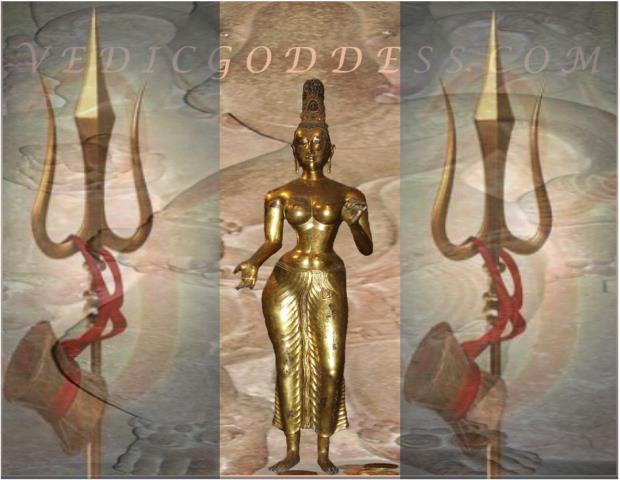
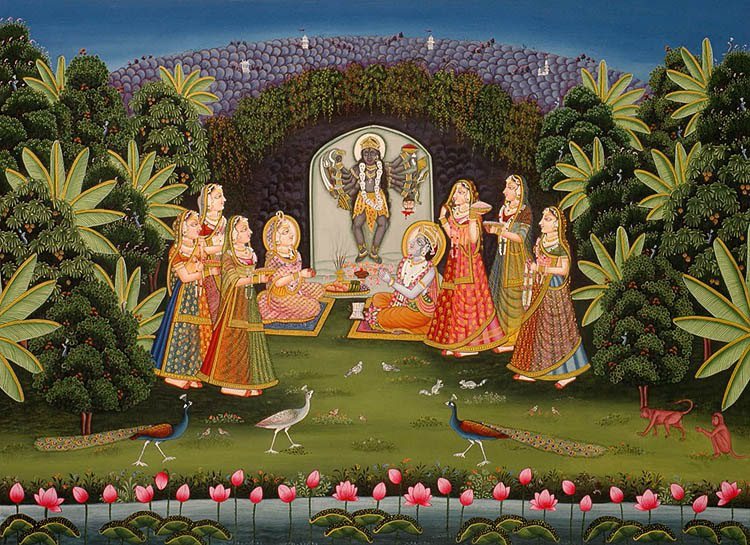
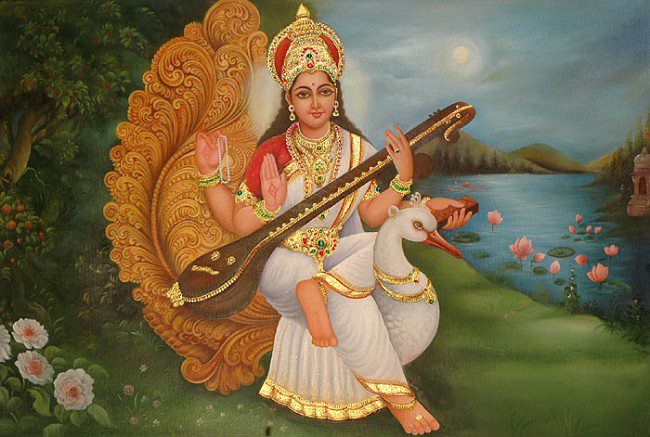
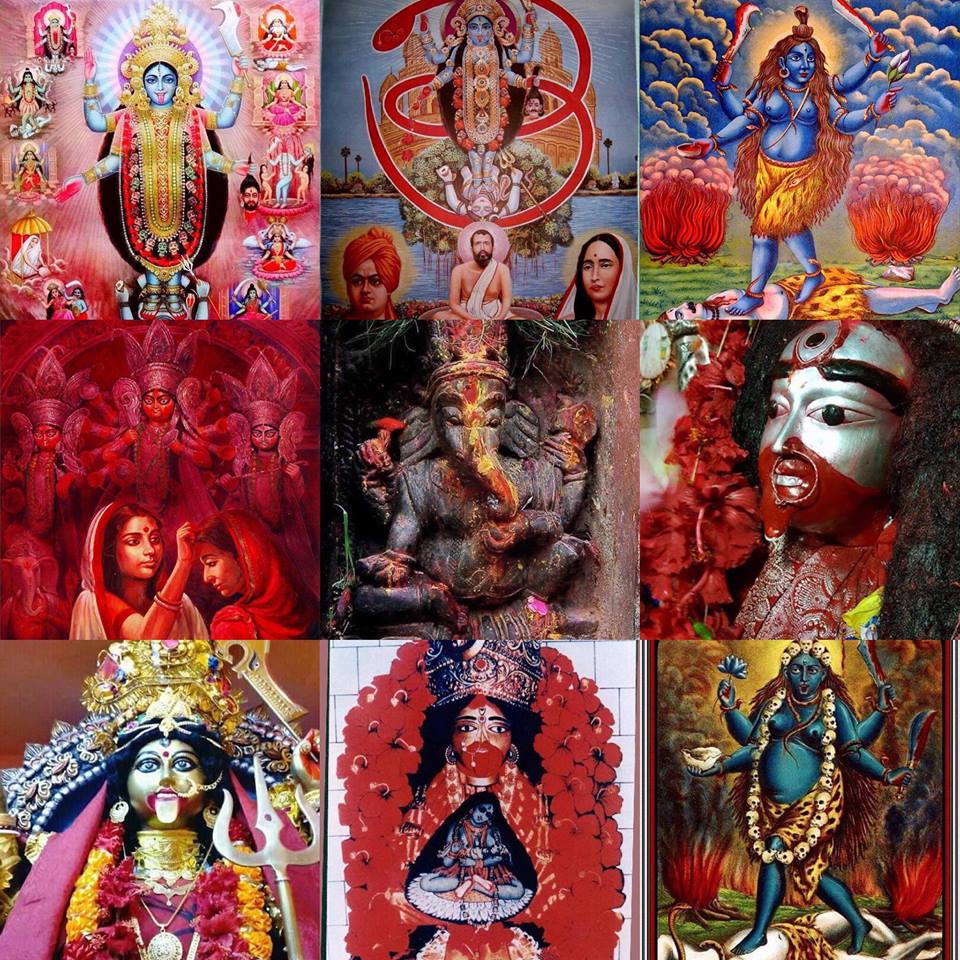
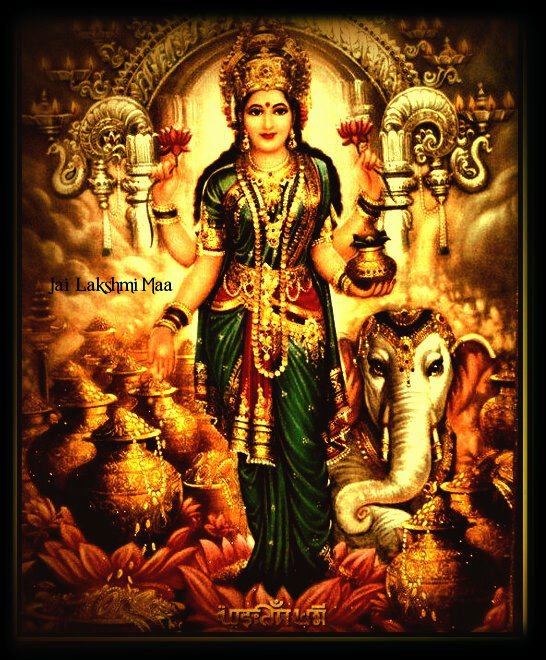
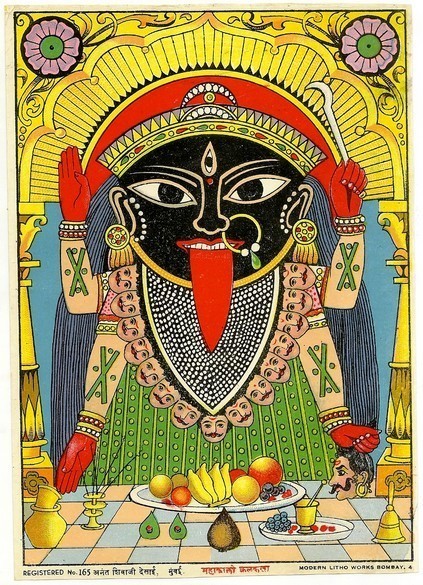
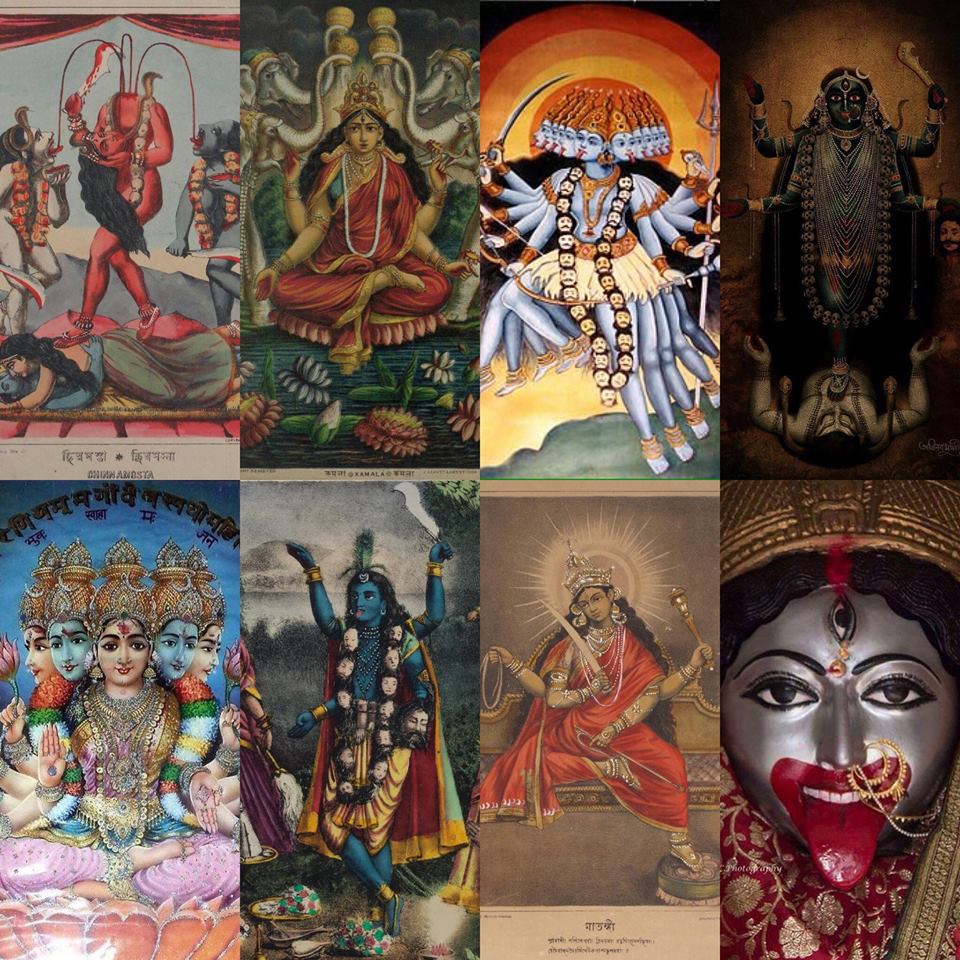
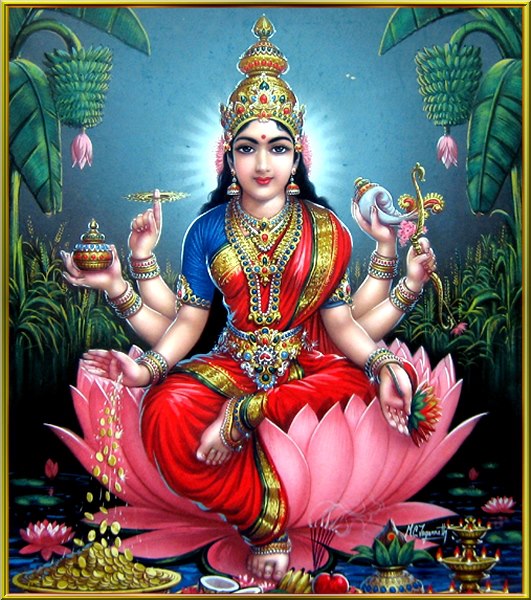
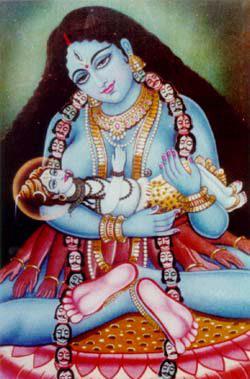
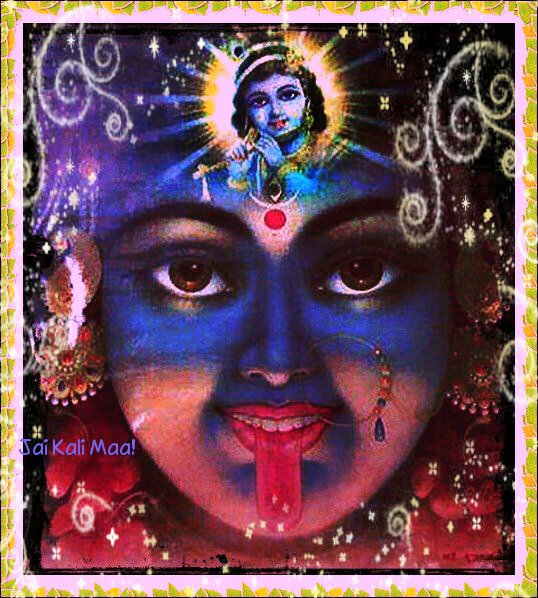
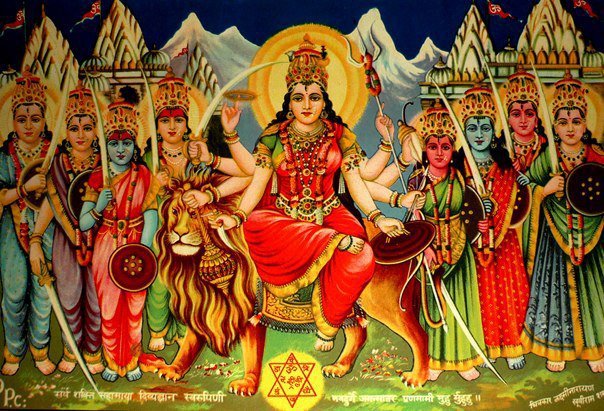
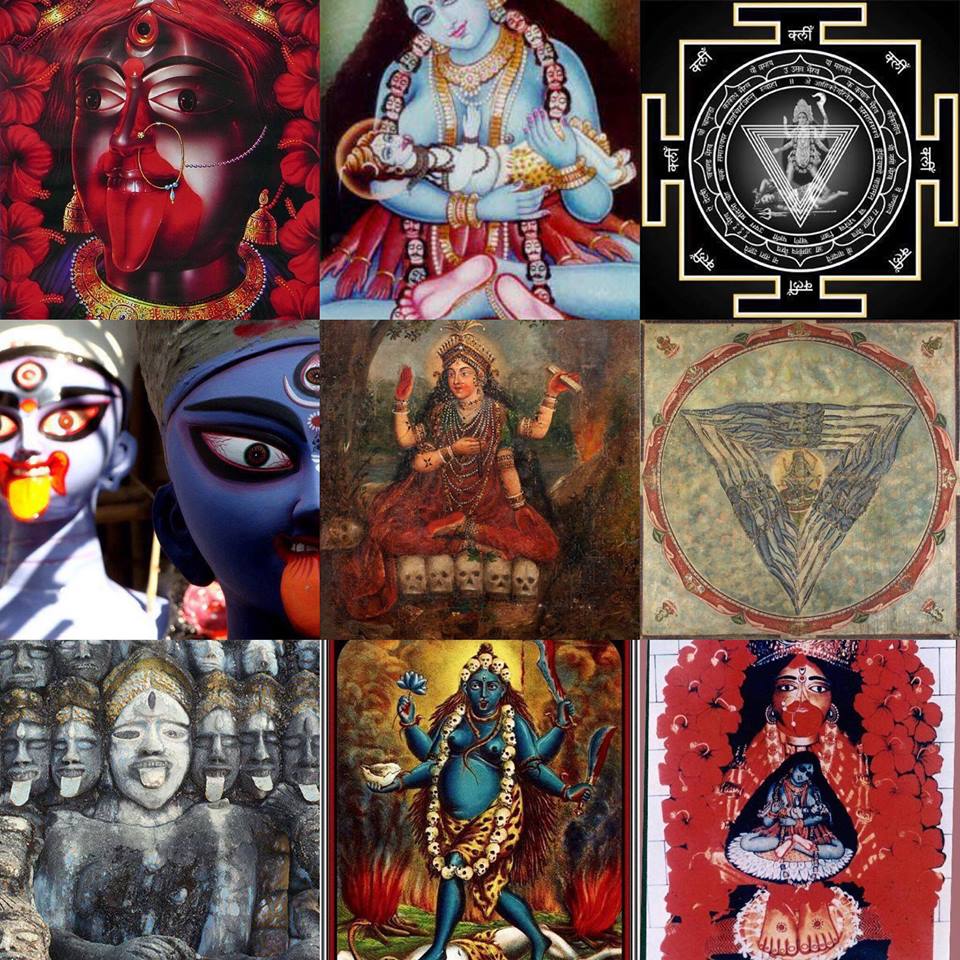
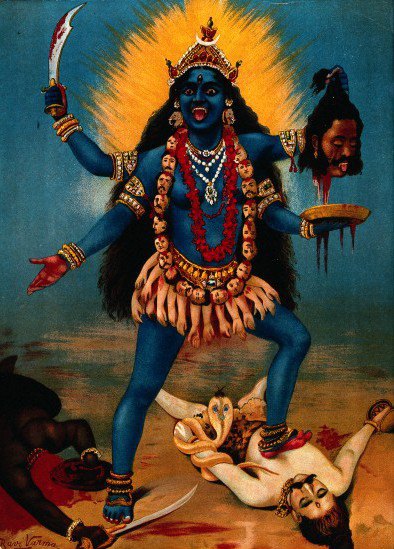
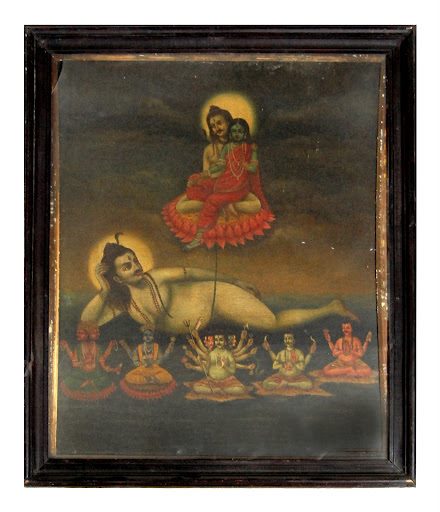
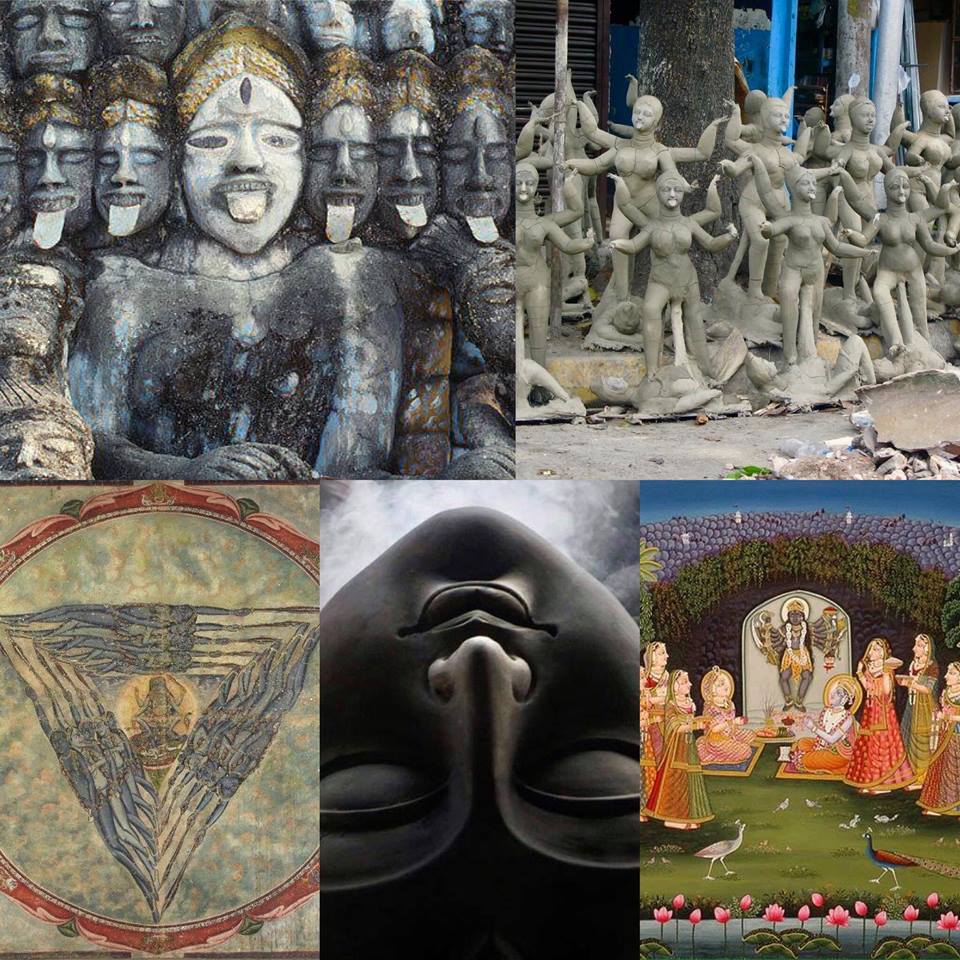
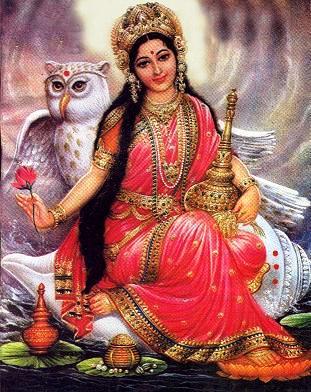
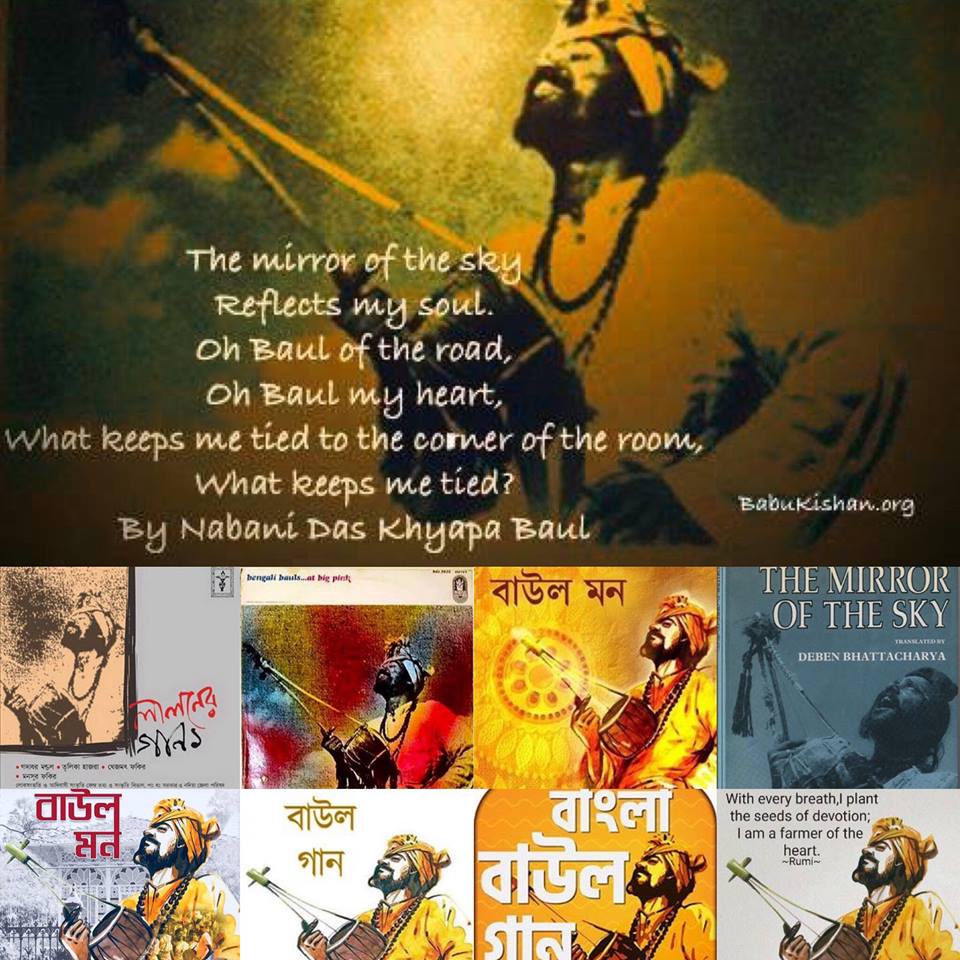
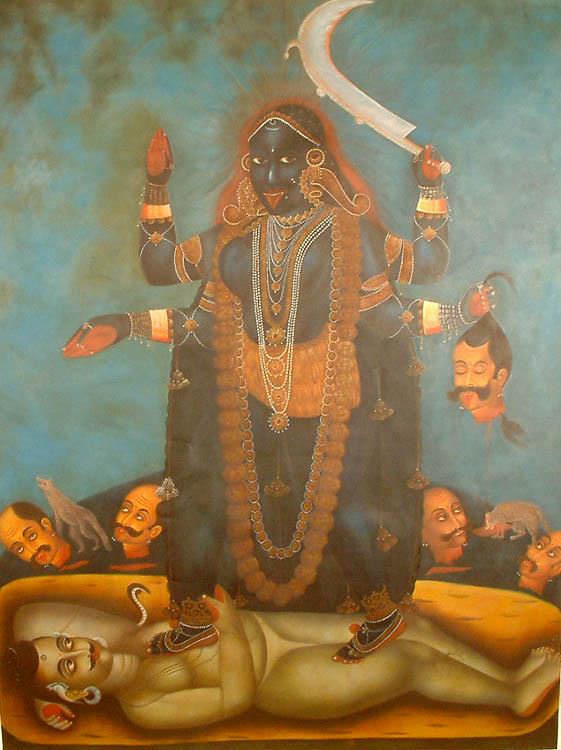
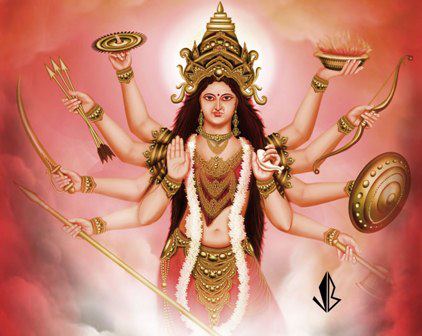
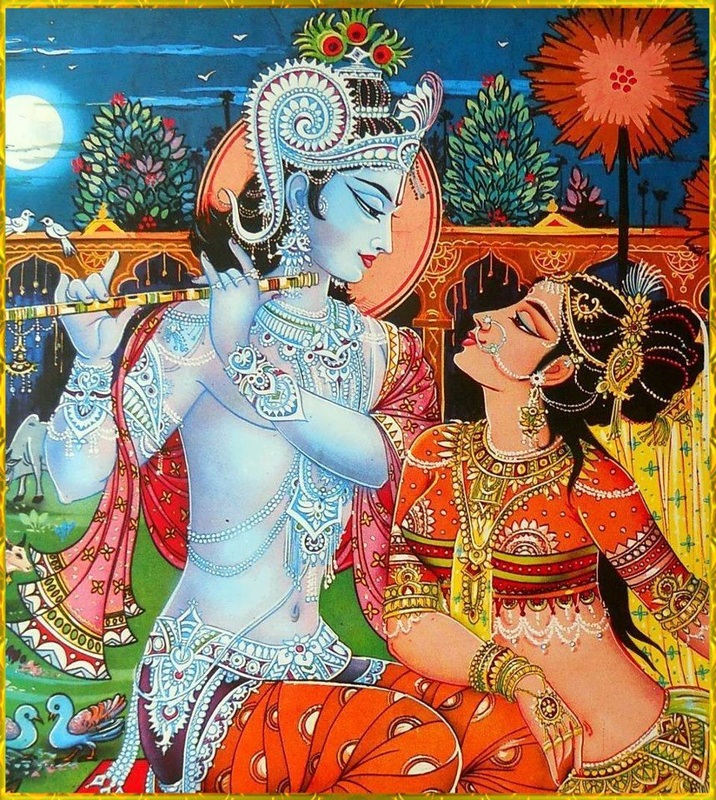
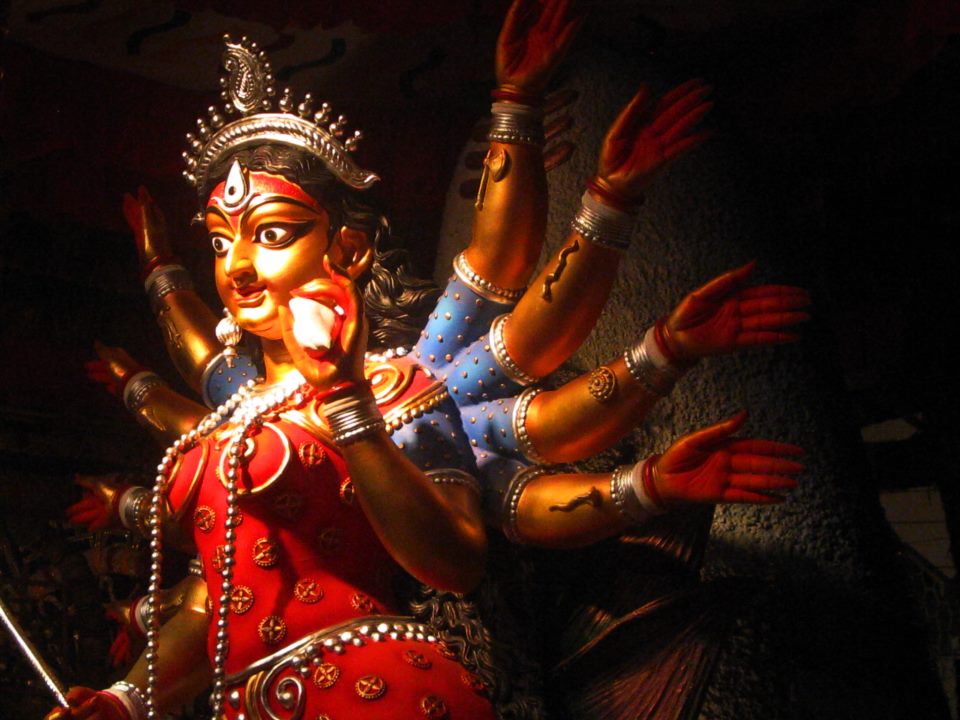
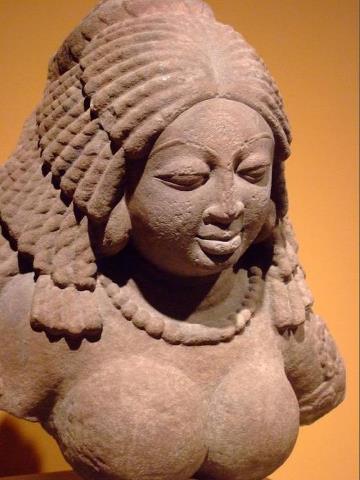
 RSS Feed
RSS Feed
